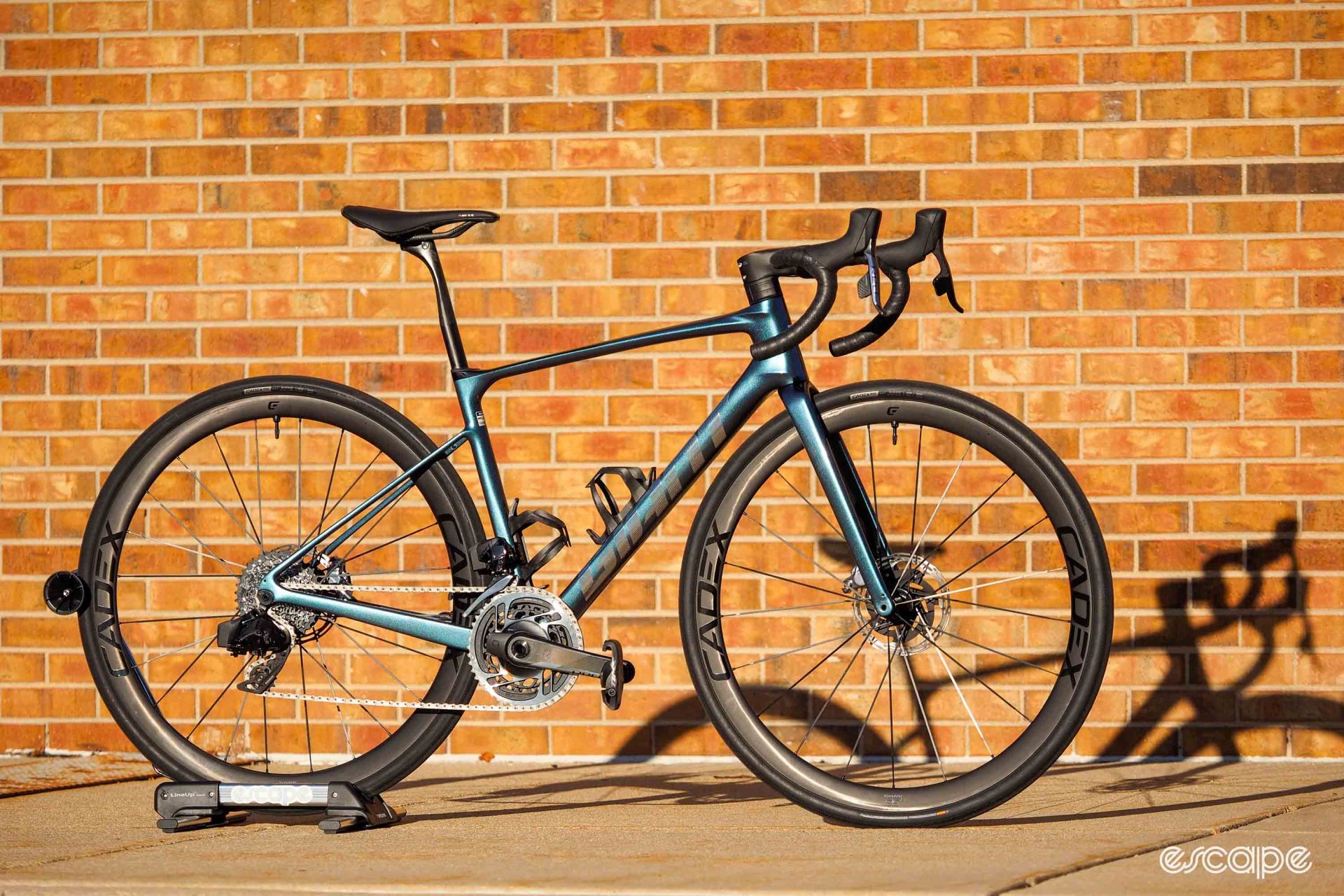While some performance-minded road riders are focused on marginal gains and aerodynamic efficiency, others just want a light bike that looks, feels, and handles great while offering just enough capability for a broad range of roads – be they paved or otherwise. For the latter, Giant’s revamped carbon fiber Defy Advanced ticks an awful lot of boxes.
It’s as light as many brands’ flagship road racers and feels just as efficient. It prioritizes rider comfort but doesn’t resort to anything weird to get there. Visually, it presents like a full-blown performance machine but there’s clearance for 38 mm-wide tires and mounts for front and rear fenders. Heck, it even looks good, it offers very good value, and I even don’t completely hate the newly hidden routing system.
So what’s not to like, you wonder? Not a whole lot.
The short of it: Giant’s fifth-generation premium carbon fiber endurance road bike, updated with a lighter chassis, additional tire clearance, and a more refined ride quality.
Good stuff: Impressively lightweight, composed ride quality, quick handling, some semblance of cockpit customization, looks brilliant.
Bad stuff: Composed-but-not-cushy ride quality, handling is arguably too quick, questionable wheelset spec, still a proprietary stem.
Going without gizmos
Giant has taken a decidedly conservative approach to its Defy Advanced endurance road bike since its inception in 2008. Although some iterations have perhaps pushed the boundaries somewhat (such as the integrated seatmast featured a few generations ago), the Defy has never been a bike that needed a lot of explanation. There have never been any extraneous moving parts, no mention of “suspension,” no funky acronyms.
It’s always just quietly went about its business of boosting rider comfort on the road, and it’s no different for this fifth-generation model.
Once again, Giant hasn’t reached for any physical mechanisms to enhance the Defy Advanced’s ride quality, instead preferring to further refine its “D-Fuse” compliance concept. The new Defy features a D-shaped carbon fiber seatpost and handlebar tops that the company claims flexes more over bumps than a similarly sized round section. Further augmenting that flex is the generous seatpost extension produced by the highly sloped top tube, and a cutout on the backside of the post that makes the the post behave even more like a leaf spring.
Getting into specific numbers, Giant claims the updated D-Fuse seatpost can flex up to seven mm under load, whereas the new Contact SLR D-Fuse handlebar found on upper-end models “delivers 40 percent more compliance compared to the previous generation.”
If that’s not enough for your local terrain, the maximum allowable tire width has grown to 38 mm (it was 35 mm previously) to provide even more cushioning. And while Giant doesn’t pitch the new Defy Advanced as a potential light-duty gravel bike, such generous tire clearances means the bike could nevertheless serve in that role. Regardless, 32 mm-wide tires are included stock from the factory – just like the outgoing Defy – although measured widths are closer to 34 mm.
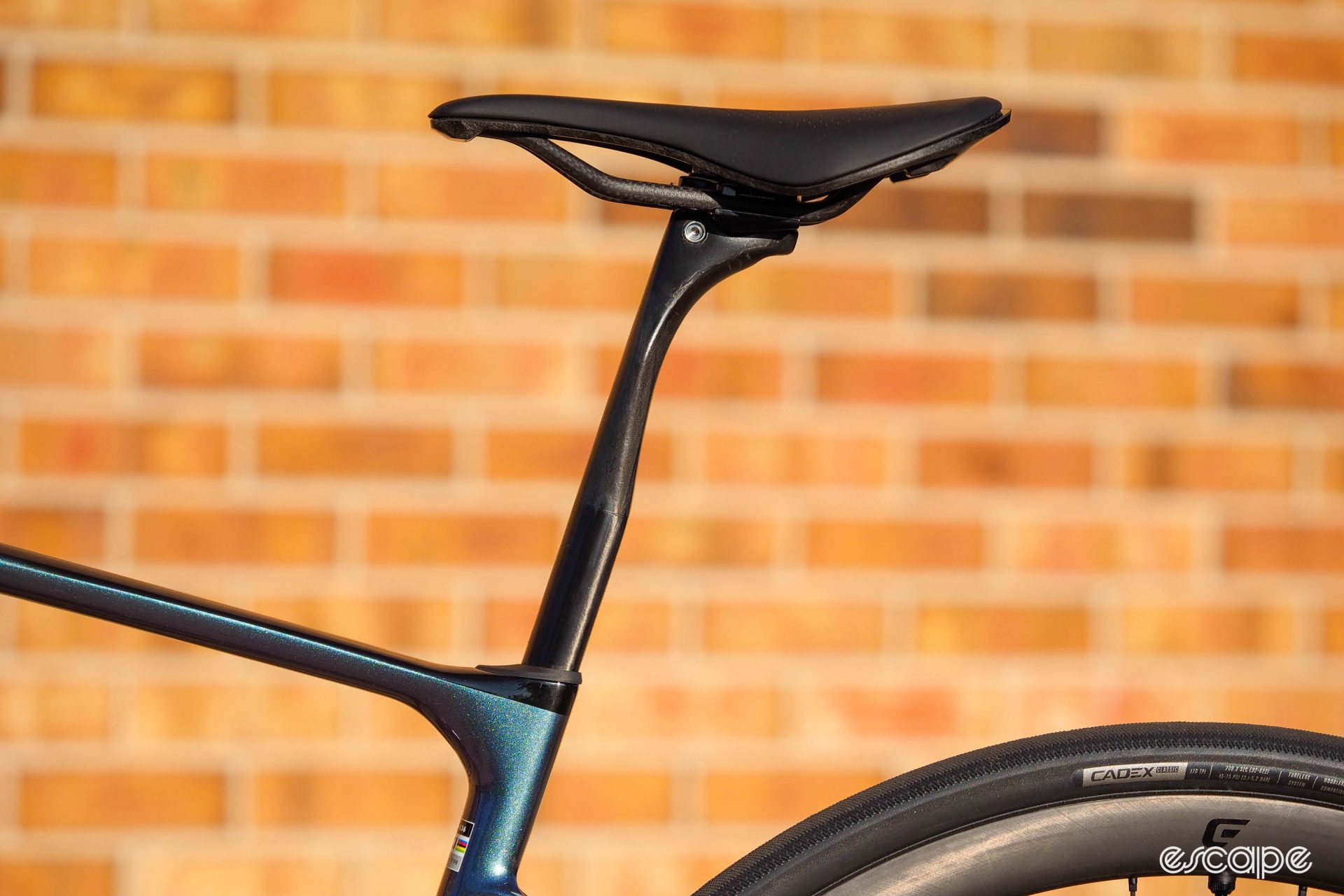
Interestingly, Giant doesn’t make any explicit mention of the frame or fork itself playing a big role in the comfort equation. There are some proven nods here – such as the slim fork blades, flattened top tube, and the dropped and flattened seatstays – but the implied message is that while frame and fork can (and do) contribute to ride quality, most of those gains are found at the touch points and tires.
Giant also hasn’t included its hallmark integrated seatmast (ISP) into any of the new Defy Advanced models – even the top-tier Defy Advanced SL – despite stressing in the past that it was the best way to produce a softer ride quality.
“You are correct about our previous statements regarding ISP, which certainly apply to a more uniformly-shaped seatpost design (such as TCR Advanced SL, where efficiency is key),” explained Giant senior product marketing manager Andrew Juskaitis. “When it comes to engineering compliance, we are able to radically engineer and shape the D-Fuse seatpost in ways we couldn’t achieve in an ISP for the ultimate in compliance. In addition, we know this range of bicycles will be used for all types of road riding adventures, which translates into a more-easily transportable package, which ISP designs can make challenging.”
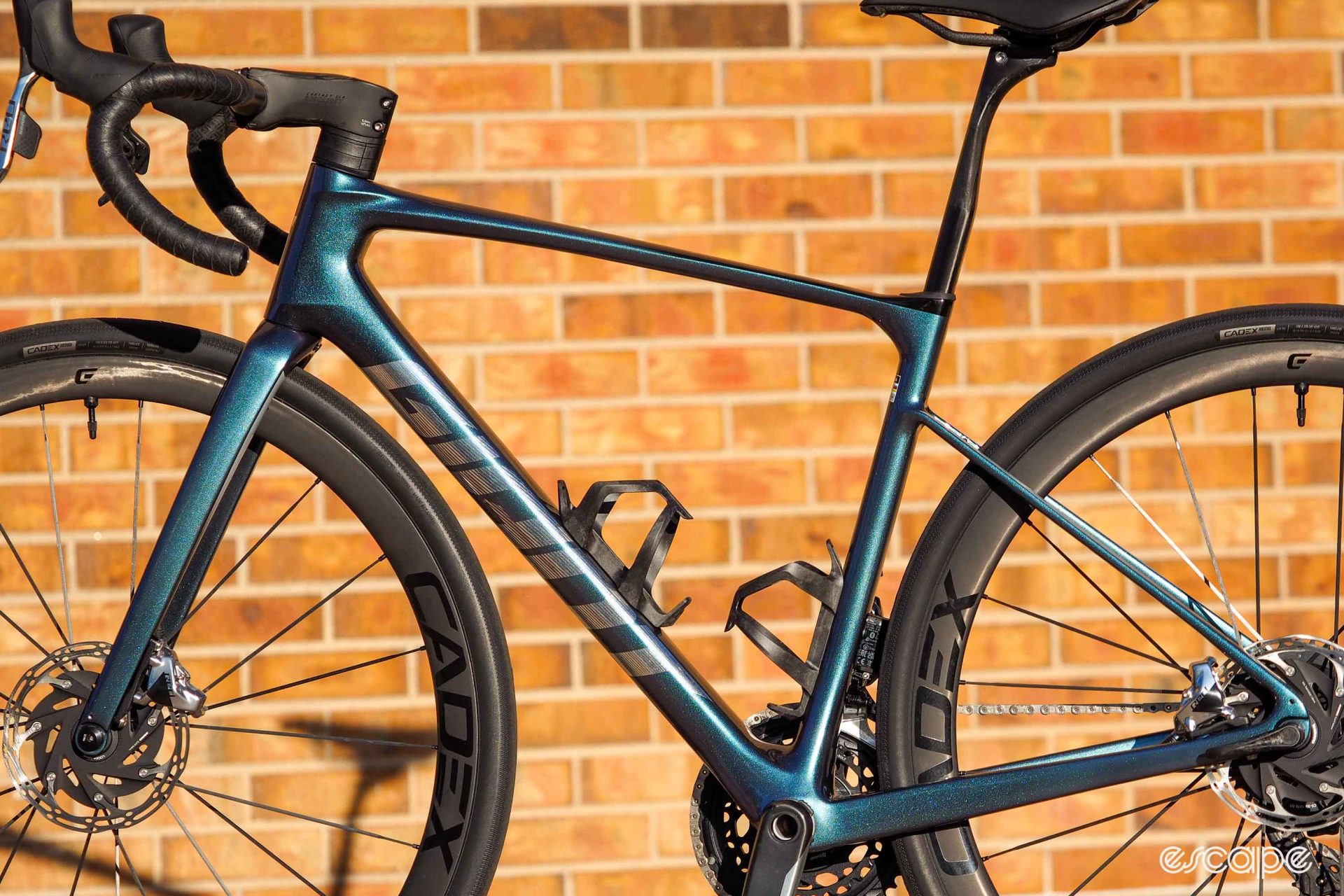
Going along with that added comfort is a fairly substantial decrease in weight. Returning to the Defy Advanced family after a multi-year hiatus is the top-tier Defy Advanced SL, which Giant says weighs just 785 g for an unpainted medium frame, plus 345 g for the matching uncut fork – a big drop from the 980 g for a comparable 2023 Defy Advanced Pro. According to Giant, this improvement is due in large part to bigger (but fewer) pieces of high-grade carbon fiber, laser-cutting techniques for the smaller pieces that require more precision, and the strategic use of robotic ply placement to minimize material overlap – construction methods that were previously introduced on the flagship TCR and Propel models. Notably, all of this is happening in Giant’s own factory in Taiwan just as it always has, and not a third-party manufacturing partner as is more typically the case.
The second- and third-tier Defy Advanced Pro and Defy Advanced go on a diet as well, with both tipping the scales at an impressive 860 g, plus 345 g or 381 g for the matching fork, as compared to 406 g for the 2023 Defy Advanced Pro fork. To hammer the point home, even the base-level Defy Advanced frame is reportedly 120 g lighter than last year’s Defy Advanced Pro.
Looking at the more complete frameset weights (including the frame, fork, headset, expander plug, top cap, seatpost, seatpost clamp, front and rear derailleur hangers, and associated hardware), Giant says the new Defy Advanced models are between 117 and 228 g lighter than the outgoing model.
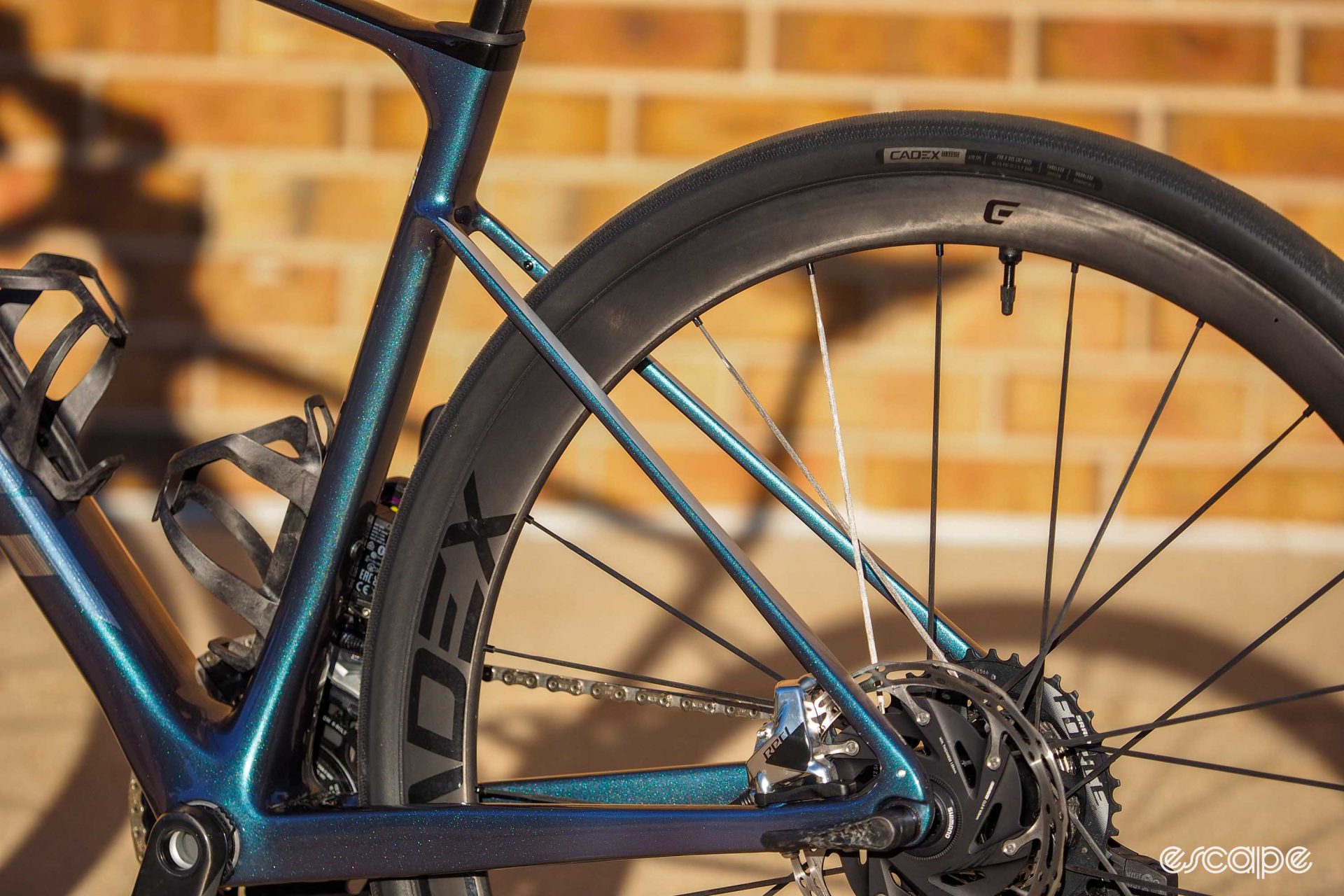
Giant actually could have reduced weight even further (by 22 g, apparently) were it not for the demands of an increasingly fickle and fashion-conscious market. As you’d expect, the new Defy Advanced has moved to fully hidden control line routing, which mimics the system used on the more aero-focused Propel.
Up front is a proprietary D-shaped steerer tube, although unlike with the seatpost and handlebar’s compliance-focused purpose, here the shape is used to make room for the brake hoses without having to increase the diameter of the upper headset assembly. Control lines pass through or underside the bar tops, and then tuck along the underside – not inside – of the stem before taking a downward turn into the molded plastic guide and through the shaped headset spacers. As usual, those spacers are split so you can raise and lower the stem without too much headache. You can also flip the stem upward if you need more height, although that requires a different headset spacer that isn’t included. But if lower is what you’re after, there’s no provision at all for cleanly putting spacers on top of the stem. The stock spacers will fit, but it doesn’t exactly make for a tidy look.
It’s also worth pointing out the D-shaped steerer is currently only compatible with Giant’s own stems; even stems from Giant’s premium Cadex division won’t work. That said, given the system is now used on both the Propel and Defy Advanced ranges, hopefully the volume is such that a third party might see enough justification to jump into the game with more options.
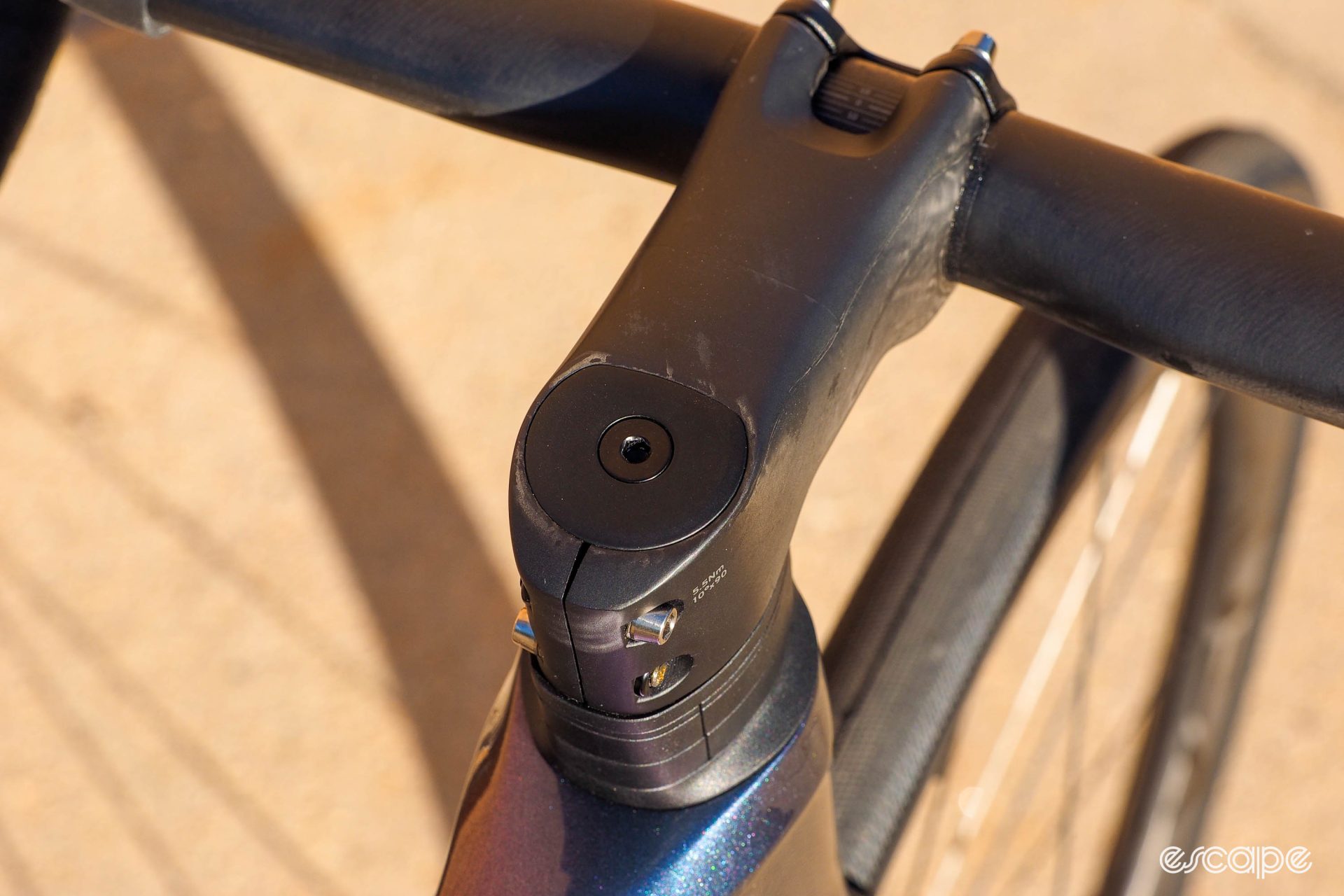
Giant has at least resisted the temptation to use a one-piece cockpit for any of the new Defy Advanced models, sticking to a tried-and-true two-piece setup for better adjustability and more customization potential. Provided the exit ports are conveniently located, even running the lines internally through the bar shouldn’t be an issue given the standard 31.8 mm diameter, and since the lines aren’t run through the stem, slight changes in stem length are just as straightforward as they’ve always been.
Less contentious are the claimed improvements in chassis rigidity, which should not only benefit the bike’s responsiveness in terms of power transfer, but also in handling precision. Going by industry-standard Tour Magazin-style bench tests, the new Defy Advanced SL frameset earns a score of 143 Nm/° (basically a measure of how much force is required to deflect a frameset by a certain amount). That’s still not quite as lofty as the 163 Nm/° figure posted by the TCR Advanced SL, but still nearly a nine percent gain over the outgoing Defy Advanced Pro, and supposedly slightly better than the Scott Addict SL and Trek Emonda SLR.
Giant says the new Defy Advanced Pro is on par stiffness-wise with the previous version, while the base-level Defy Advanced is just under four percent less rigid. Either way, not bad for an “endurance road bike.”

In terms of frame geometry, the Defy Advanced actually isn’t all that different from the TCR in any of the six available sizes. Steering characteristics are still somewhat surprisingly quick given the intended market, with trail figures in the high 50s for most of the sizes, although that’s tempered somewhat by the 15 mm-longer chainstays, 20 mm-longer wheelbase, and the 3-5 mm-lower bottom bracket as compared to the full-blown road racer that is the TCR.
Stack and reach are only subtly relaxed, too, with the medium size sporting a front end that’s only 13 mm taller and eight mm closer than a TCR of the same size, for example. Riders seeking a very upright position might have a hard time given the limited options presented by that proprietary stem, but riders looking to stretch out and get low should still be pretty happy.
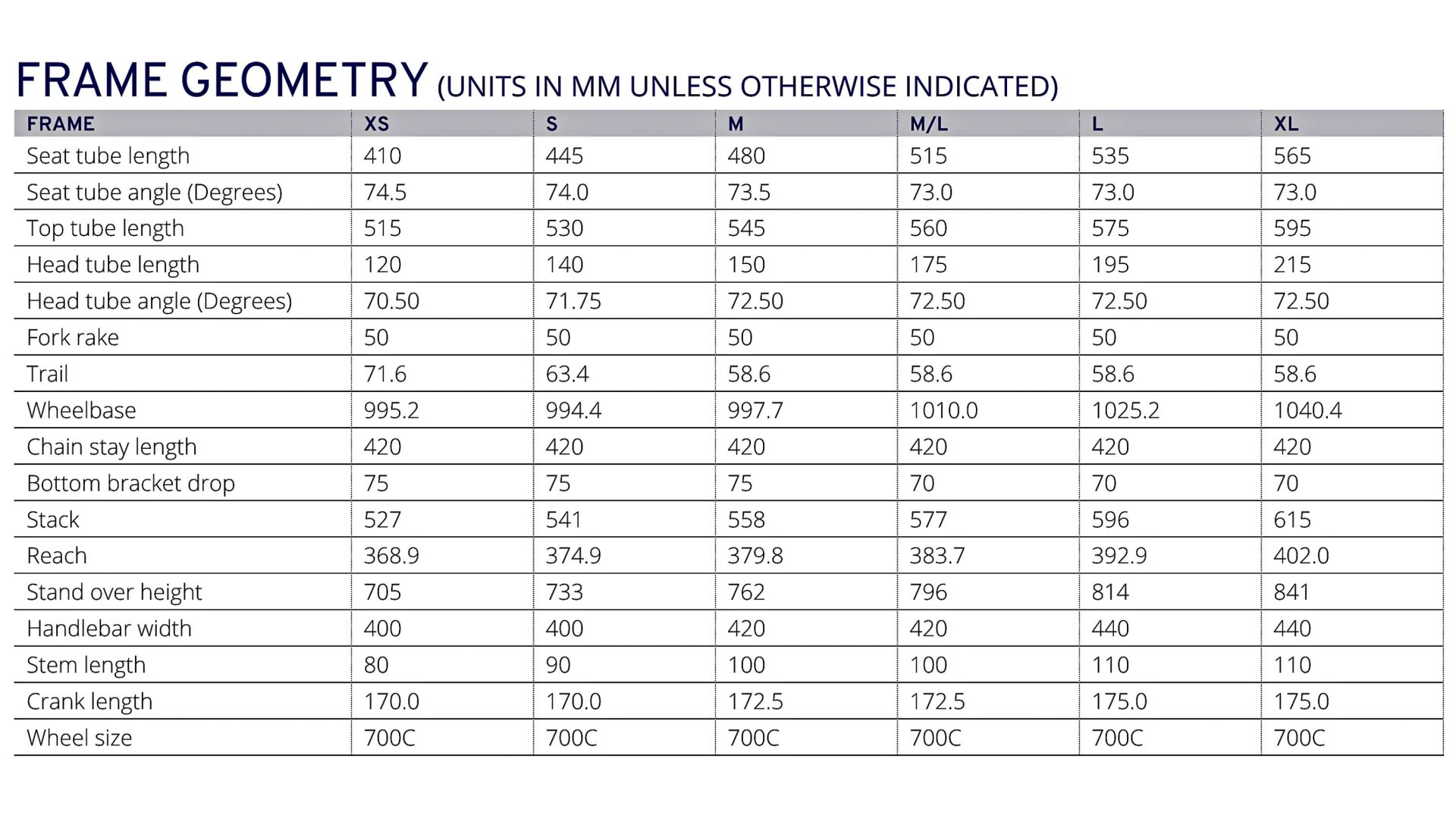
Other details include hidden front and rear fender mounts, dedicated out-front combo computer and accessory mounts (included on Defy Advanced Pro and Defy Advanced SL models, optional on Defy Advanced ones), reversible seatpost cradles for an effective -5 or -15 mm setback, and profiled carbon composite bottle cages (included across the board). Defy Advanced SL models are compatible only with current wireless or wiredless electronic drivetrains, but Defy Advanced Pro and Defy Advanced models will also work with mechanical ones. SRAM’s Universal Derailleur Hanger (UDH) won’t be found on any of the new Defy Advanced models, though.
Models, prices, and availability
The new Defy Advanced range will include nine complete models in total (depending on region), including four with the base-level Defy Advanced frameset, three Defy Advanced Pro models, and two top-tier Defy Advanced SL builds. The Defy Advanced SL will also be offered as a frameset for US$3,700 / AU$n/a / £n/a / €3,600.
Models, brief specs, and pricing for complete builds are as follows, with all versions supposedly available immediately, at least in limited quantities. Pricing reflects that not all models will be available in all regions.

Defy Advanced 3: £2,300 / €2,400 (Shimano 105/Tiagra, Giant S-R2 aluminum wheels, aluminum cockpit).
Defy Advanced 2: US$3,000 / AU$3,800 / £2,700 / €2,900-3,000 (Shimano 105 mechanical, Giant P-R2 aluminum wheelset, aluminum cockpit) .
Defy Advanced 1: US$4,000 / AU$5,000 / £3,200 / €3,700 (Shimano 105 Di2 wiredless electronic, Giant P-R2 aluminum wheelset, aluminum cockpit).
Defy Advanced 0: £3,300 (SRAM Rival AXS wireless electronic, Giant P-R2 aluminum wheelset, aluminum cockpit).

Defy Advanced Pro 2: £3,500 / €3,900 (Shimano 105 mechanical, Giant SLR 2 36 carbon wheelset, aluminum cockpit).
Defy Advanced Pro 1: US$5,000 / AU$6,500 / £4,600 / €4,900-5,000 (Shimano 105 Di2 wiredless electronic, Giant SLR 1 36 carbon wheelset, aluminum cockpit).
Defy Advanced Pro 0: US$6,500 / AU$8,000 / £6,000 / €6,400-6,500 (Shimano Ultegra Di2 wiredless electronic, Giant SLR 1 36 carbon wheelset, aluminum stem and carbon bar).
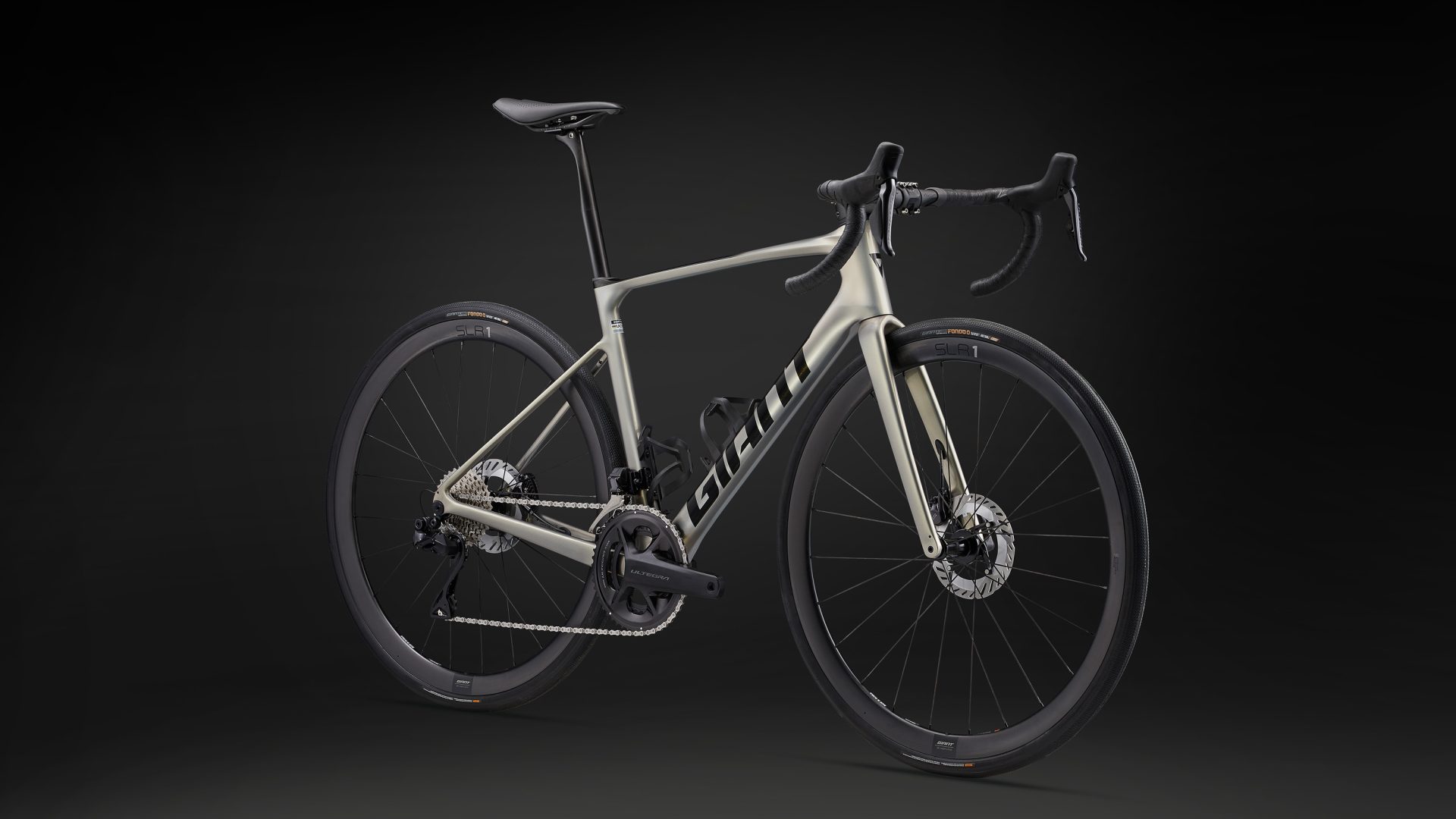
Defy Advanced SL 1: AU$9,500 / £8,500 (Shimano Ultegra Di2 wiredless electronic, Giant SLR 1 36 carbon wheelset, carbon fiber cockpit).
Defy Advanced SL 0: US$12,000 / AU$14,000 / £11,500 / €11,800-12,000 (SRAM Red AXS wireless electronic, Cadex 36 Disc carbon wheelset, carbon cockpit).
Ride report
Whether justified or no, when someone mentions an “endurance road bike,” often the image conjured is one of an older rider sitting bolt-upright on a bike with a massively long head tube and upturned stem pointing at the sky, casually taking in the scenery while gently pedaling along.
The Defy Advanced is not that bike – or, at least, certainly not the flagship Defy Advanced SL 0 model Giant sent over for me to ride for a few weeks – and along those lines, I’d argue the modern endurance road bike rider is often quite far away from that overused stereotype.
First bit of evidence: it’s wickedly light.
Outfitted with a complete SRAM Red AXS wireless electronic groupset, Cadex 36 Disc Tubeless carbon-spoked semi-aero wheels, 32 mm-wide (34 mm actual width) Cadex Classics tubeless tires, and a smattering of carbon fiber Giant finishing kit, the whole thing tips the scales at just 7.07 kg (15.59 lb) for my small-sized tester without pedals or accessories. That’s less than 0.4 kg (0.88 lb) heavier than the decidedly more weight-focused Giant TCR Advanced SL 0 Disc in the same size and similar spec, and more than competitive with many dedicated road racing models. To hammer the point home, more than 150 g of that difference rests in the tires alone.
This new Defy Advanced SL 0 is not a heavy bike, by any means.
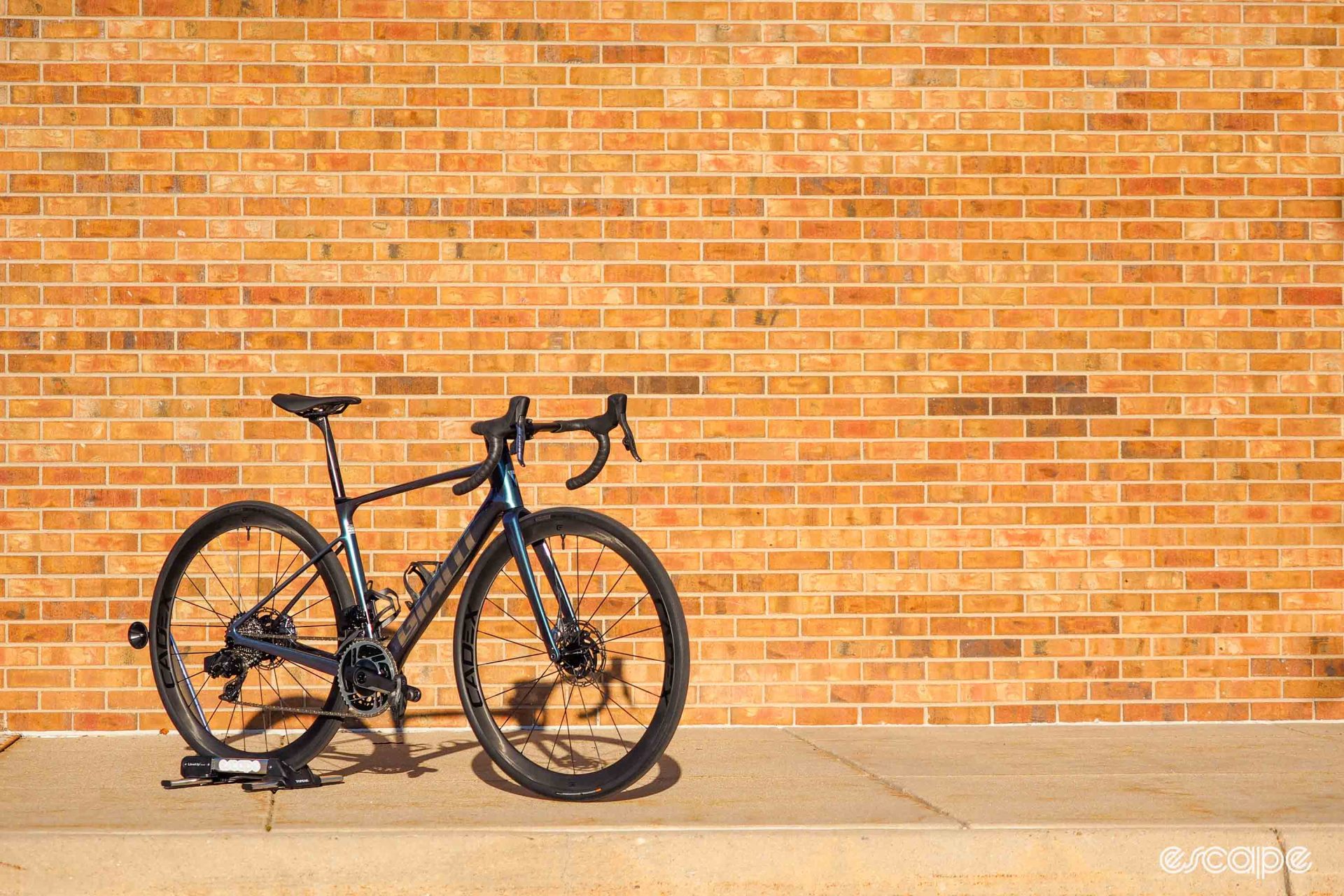
Second bit of evidence: how it feels under power.
That low weight is plainly evident while riding, particularly when heading uphill, where the Defy Advanced SL 0 especially excels. Combined with that excellent overall chassis stiffness, it’s eager to gain elevation with little sense that it just wants to leisurely enjoy the view. Stomp on the pedals and it immediately responds in kind, just like a good dedicated race-focused machine. That slight disadvantage in stiffness compared to the TCR might be tangible at particularly high outputs, but in most situations, it’s entirely imperceptible. No one is going to characterize this thing as soft in terms of how it channels power.
Third bit of evidence: the geometry.
Endurance road bikes are usually expected to be lazy through corners: slow to initiate, requiring lots of lean to hit the apex, and then tending to drift further to the outside of a turn than you might want. However, the Defy Advanced SL 0 thoroughly bucks that trend with that unusually short trail dimension. Initial turn-in is so quick that it’s almost abrupt, and it takes little effort to cut a tight arc even through decreasing-radius downhill corners.
“For this generation of Defy, we wanted to replicate a healthy dose of TCR performance, with an overall, more-forgiving ride quality,” Juskaitis explained when I questioned him about the steering quickness. “[It’s] not a gravel bike, not a Grand Tour bike. Comfortably, efficiently, right in the middle.”

The slightly longer wheelbase does slow things down a little bit after that initial change in direction, but the difference is subtle, and overall, the handling definitely isn’t at all far removed from a full-blown road racer – just as Giant intended, apparently. Along those lines, though, high-speed stability may not be to the level that many endurance road buyers want, and not what I’d hoped for. It’s twitchier and more nervous-feeling up front than I prefer when rapidly losing elevation, and even with that lowered bottom bracket, the Defy Advanced SL 0 just doesn’t feel as settled and rock-solid on particularly fast downhills as something with a mellower trail figure.
Fourth bit of evidence: the ride quality?
Here’s where things get even more interesting. One of the hallmarks of endurance road bikes is supposed to be a comfortable ride. To be perfectly clear, the Defy Advanced SL 0 is very comfortable in terms of how it handles most road imperfections. The seatpost flexes quite a lot when hitting bumps, and even just pushing down on the ends of the bar quickly shows there’s some movement available there as well. But whereas Trek’s IsoSpeed and Specialized’s FutureShock suspension features serve up a positively plush ride, the Defy Advanced SL 0 is decidedly less cushy.
All of that component flex definitely takes the sting out of bigger impacts – especially the ones you aren’t expecting – while much of the unpleasantness of coarse road texture is filtered out by those higher-volume tires. But when it comes to Giant’s D-Fuse concept, we’re still talking about springs here, and the spring rates are probably higher than many buyers in this category will expect. That super-supple initial movement that you get with those dedicated systems like IsoSpeed and FutureShock just isn’t there, and while some might perceive the vibrations that come up through the bars and seatpost as useful feedback, and others might find it more tiring after a long day in the saddle.
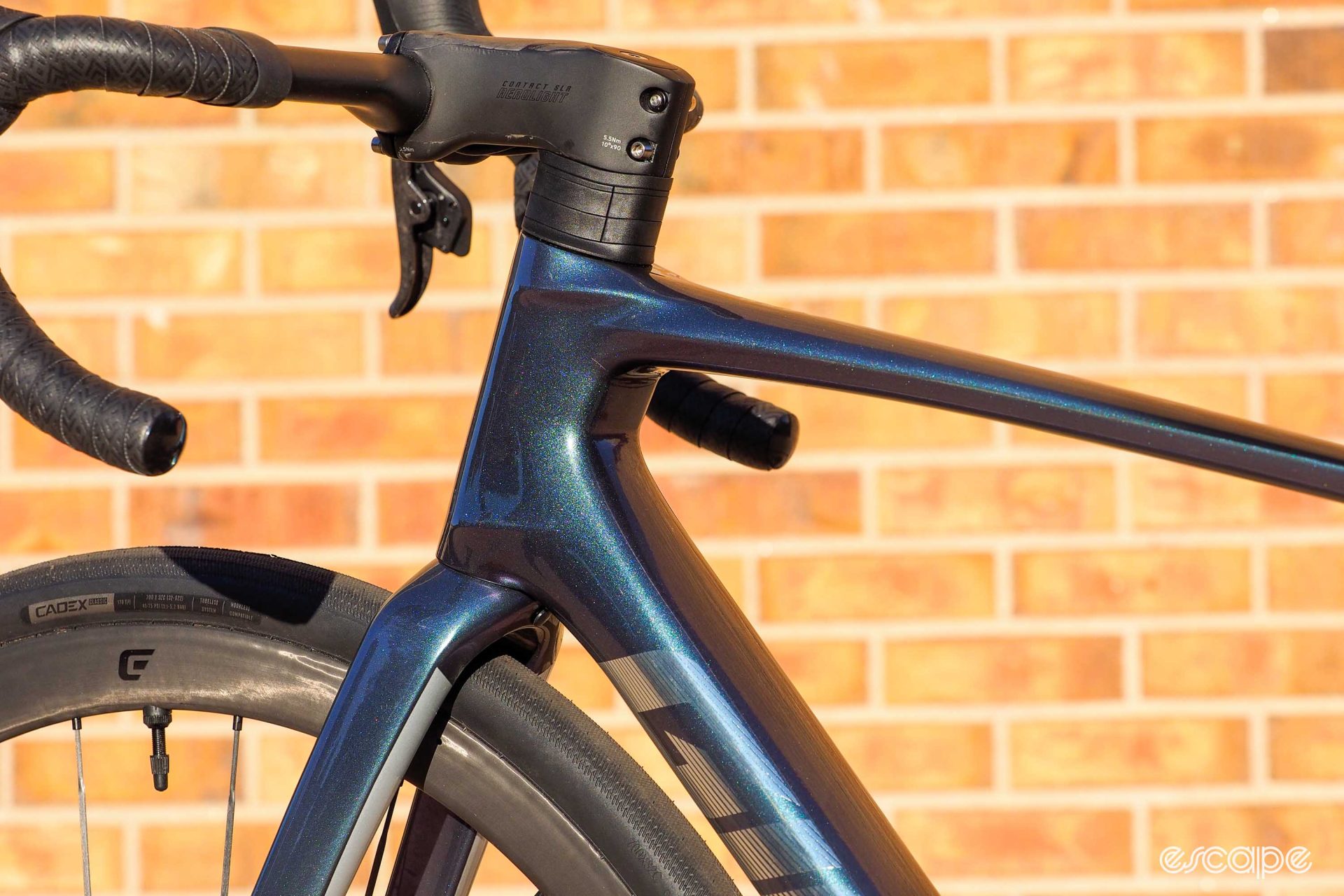
Like any seatpost-based system – Trek IsoSpeed included – the effectiveness of the Defy Advanced SL 0’s D-Fuse seatpost will vary depending on saddle height and setback, with more of either yielding a smoother ride, and less producing less mechanical advantage to get things moving. And also like most IsoSpeed-equipped bikes, the front end of the Defy Advanced SL 0 is also firmer than the rear, although the disparity isn’t as big.
Overall, the overall feel is more composed than coddling, and probably most similar to Canyon’s VCLS leaf-spring seatpost, only here you’ve essentially got it at both ends. My impression is that these latest D-Fuse designs yield the ride quality Giant was hoping for in the new Defy Advanced range, but it perhaps won’t be what everyone expects it to be. As always, a test ride is suggested if possible.
Build kit breakdown
Seeing as how my Defy Advanced SL 0 is a flagship model, it’ll be no surprise to hear that I had few issues with the components Giant hung on to the frameset. US$12,000 / AU$14,000 / £11,500 / €11,800-12,000 buys a lot of nice parts, after all.
SRAM’s top-tier Red AXS wireless electronic groupset continues to soldier on, delivering solid shift performance with what is easily the most intuitive operation in the industry: left paddle for easier gears at the back, right paddle for harder ones, both to switch chainrings. Rear shifts may be slightly noisier and a bit less refined than what you’d get from Shimano, but they’re reliable nonetheless, even under power. The disparity is bigger up front, but very careful setup certainly goes a long way here.
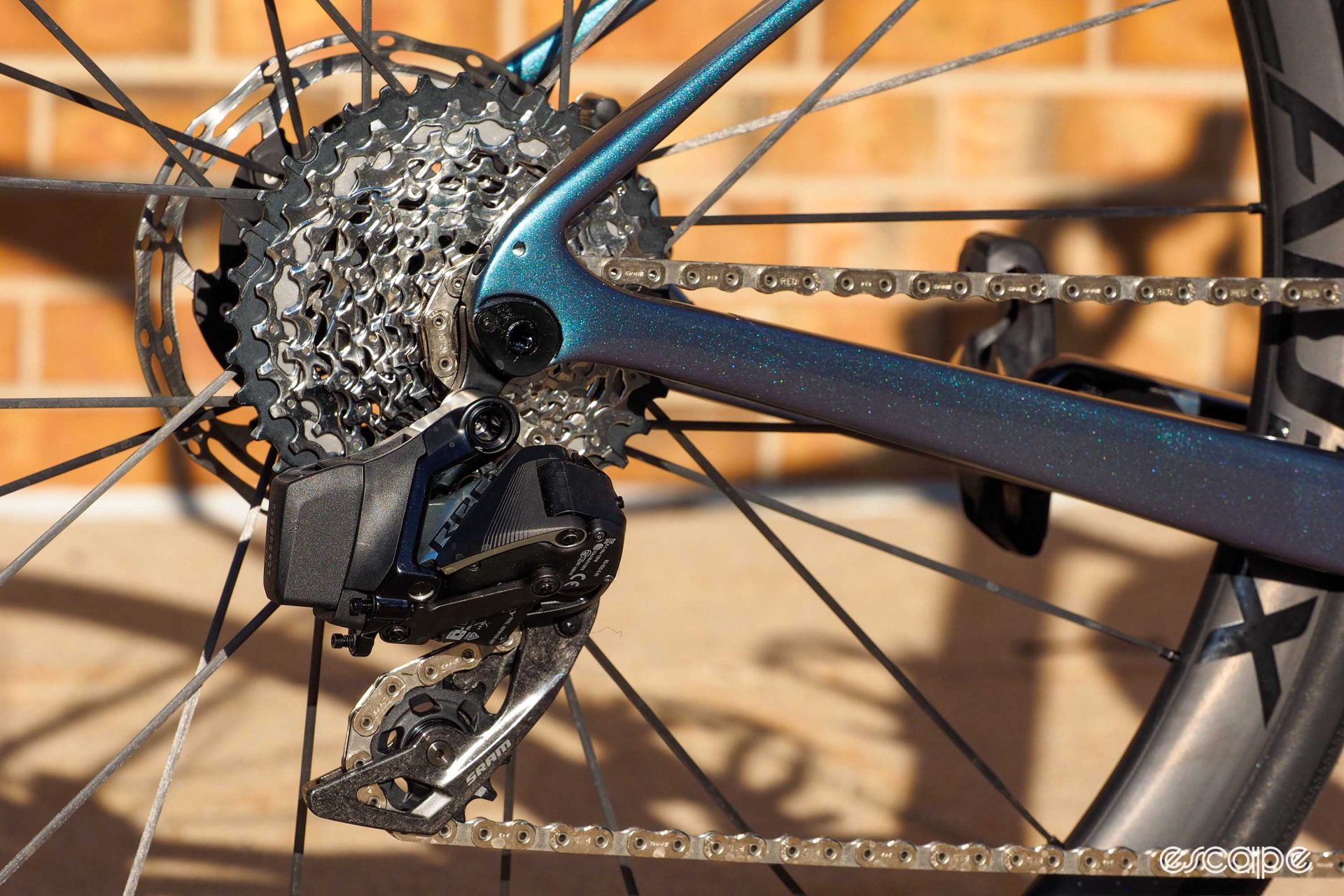
Regardless, kudos to Giant’s product manager for swapping the usual Red cassette for a Force one as it allows for a particular wide 10-36T spread, which combines with the 46/33T chainrings to provide an extra-low sub-1:1 climbing gear. Not everyone will need that, of course, but riders in more mountainous areas will undoubtedly put it to good use. Kudos for the stock power meter, too.
The Red hydraulic disc brakes performed as usual, too. Lever throw is still a little longer for my liking, but there’s ample power with excellent control from the stock organic pad compound. Giant thankfully hasn’t seen fit to save a few grams by going with a 140 mm-diameter rear rotor, either; it’s 160s at both ends, as it should be for most riders.
My experience with the Cadex 36 Disc Tubeless wheels was a little mixed. They’re tangibly light and gloriously stiff, which undoubtedly contributes to the bike’s outstanding performance when climbing. The 34 mm measured width of the tires doesn’t make for an especially aerodynamic profile with the 26 mm outer rim width, although the combo still likely cuts through the air better than a shallower wheelset with round spokes.
Nevertheless, I think Cadex’s wider-profile AR 34 Disc Tubeless wheels would have been a better choice here with their 31 mm outer width, particularly given they’re even about 30 g lighter for the pair. And much like the experience I had with the TCR I reviewed a while back, I had to balance the front wheel with a few carefully placed spoke magnets before the front of the bike felt settled at high speed.
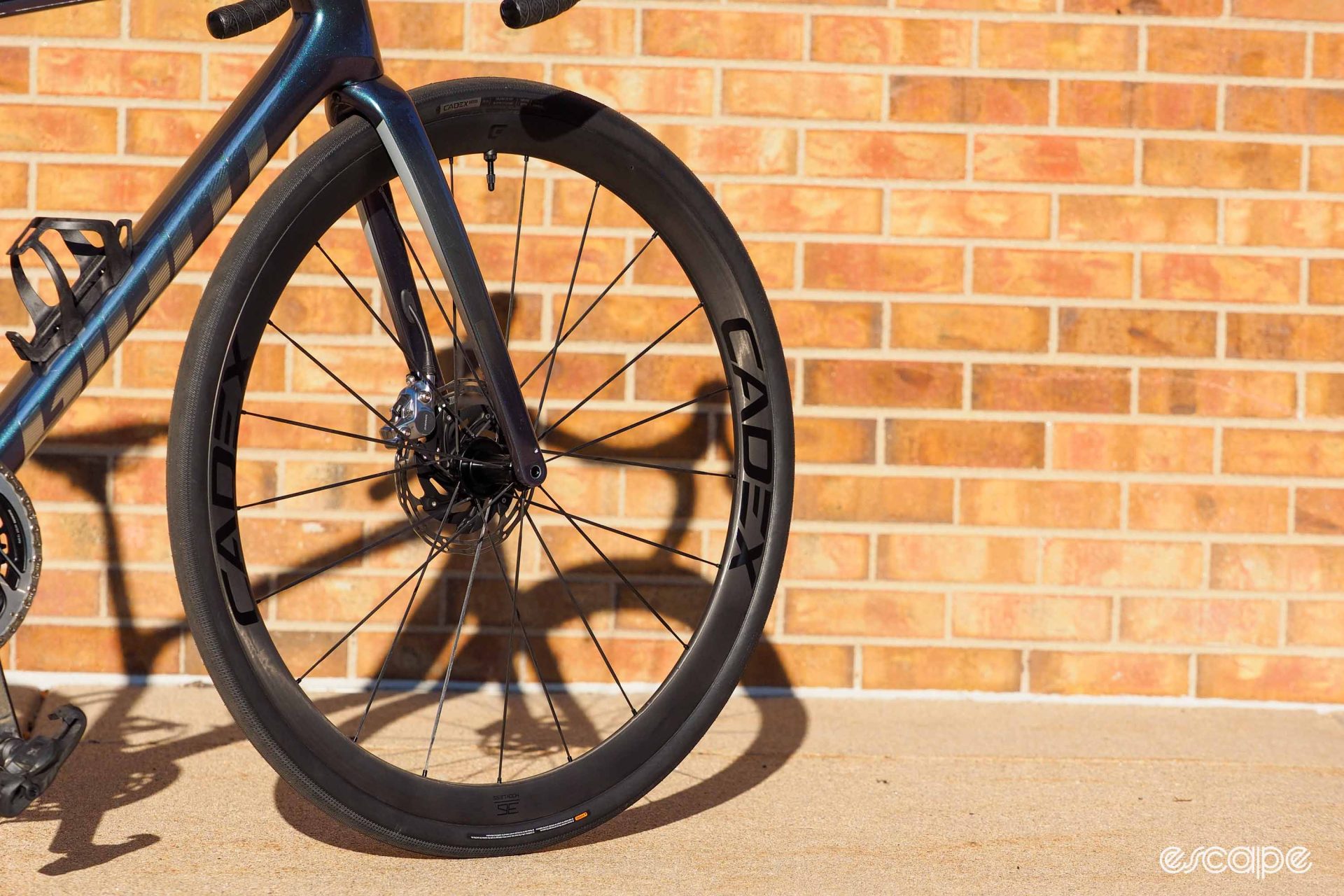
Rim profile choice aside, I most definitely could have done without the rear hub’s maddeningly loud ratchet. I’m all for fast-engaging freehubs, and years of experience with star ratchet-type drivers like this have also shown them to be very reliable, too. I can even tolerate fairly high volumes and some of the more piercing tones that seem to be permeating the hub world in recent years. However, this Cadex rear hub is both excessively loud and piercingly shrilly, and the combo was such that I found myself consciously avoiding coasting, especially if I was with other people or near pedestrians.
I thankfully was happier with the stock Cadex Classics tubeless tires, though. The 170 TPI nylon casings are reasonably supple, and grip in dry conditions is reassuringly generous. I unfortunately can’t comment on wet-conditions grip as it hardly rained during my test period, nor can I draw any conclusions on puncture protection as the absence of a flat doesn’t indicate good performance in that arena. That all said, two thumbs up to Giant for setting everything up tubeless from the factory, with nothing more required for the end user or shop than injecting sealant.
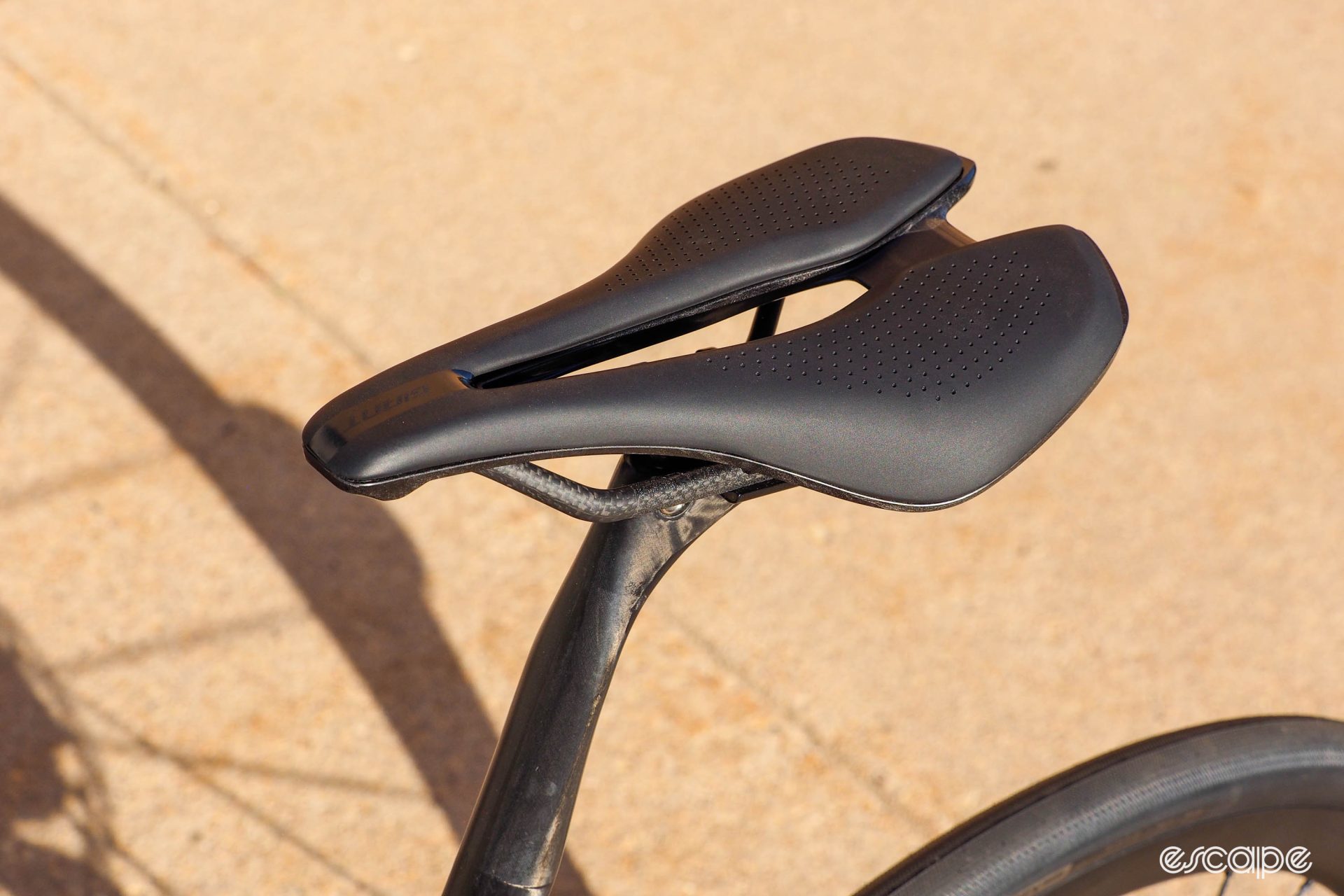
The Giant-branded finishing kits gets mostly high marks from me. Say what you will about not being able to use a different make of stem given that proprietary D-shaped steerer, but Giant has at least outfitted its flagship with a nice carbon fiber unit to minimize the criticisms. It looks good, it’s light, and it’s very stiff torsionally. The matching Contact D-Fuse SLR carbon bar sports an agreeable drop bend that’s neither too ergo-style or too traditional, and the D-shaped flats fit nicely in your palms. One negative, however, is that combination provides almost no room next to the stem clamp for an aftermarket out-front computer mount. The one Giant includes on the upper-end models certainly gets the job done, but its plastic construction comes off as a little low-budget.
I’ve no complaints at all about the Giant Fleet SLR saddle, though. It’s nicely shaped with nearly a full-length cutout, the firm padding is wonderfully supportive for long days on the road, and it’s very light at just 180 g (claimed). I’ve got one on my personal Allied Alfa Allroad, in fact.
A different tack
As I mentioned earlier on, Giant has always taken a conservative approach to the Defy, and it’s mostly worked out for the Taiwanese brand. However, endurance road bikes from its main competitors have been steadily moving toward the more comfortable end of the spectrum, and while the sorts of comfort-boosting extras those other bikes include add complexity and weight, I’d argue it’s what a lot of buyers in this category now expect.
Make no mistake: this Defy Advanced SL 0 is one heck of an all-rounder. It’s wonderfully light, it’s snappy and efficient, quick and agile, reasonably versatile, and it looks fantastic. But is it now a little too close in personality to the TCR? Or perhaps should it have moved more in the opposite direction to be more in keeping with the competition?
That’s probably a question for the market to answer, not me.
More information can be found at www.giant-bicycles.com.

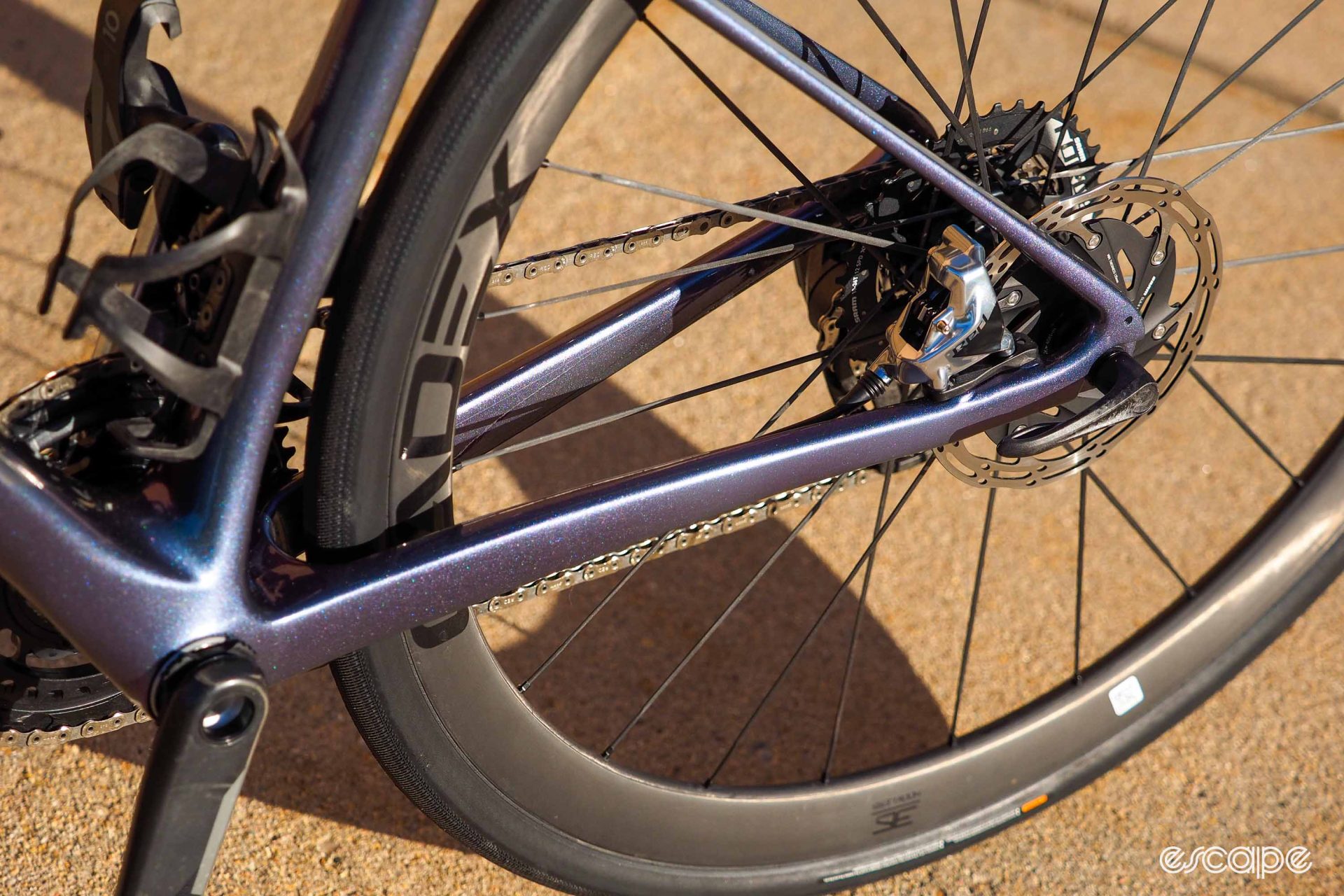
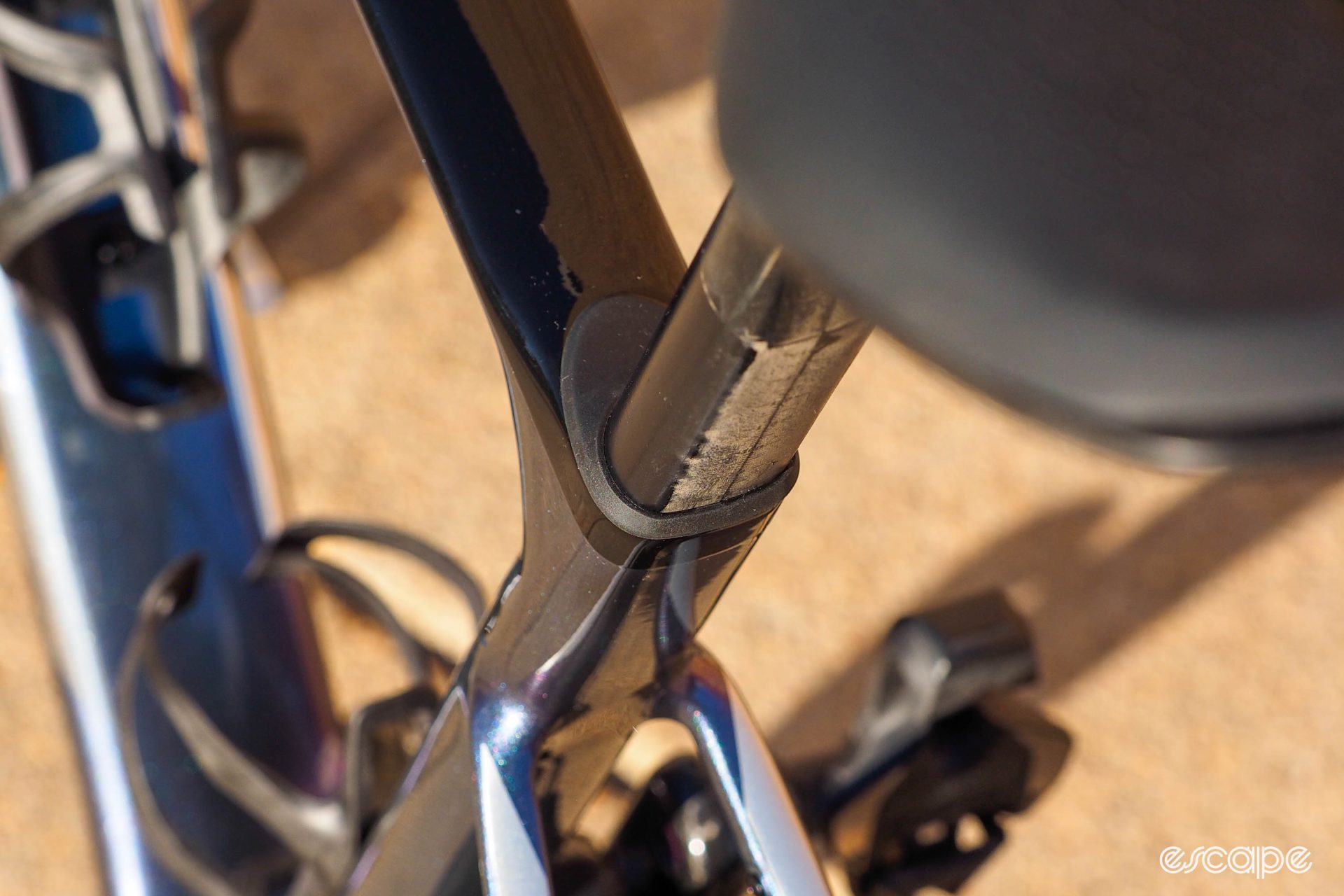
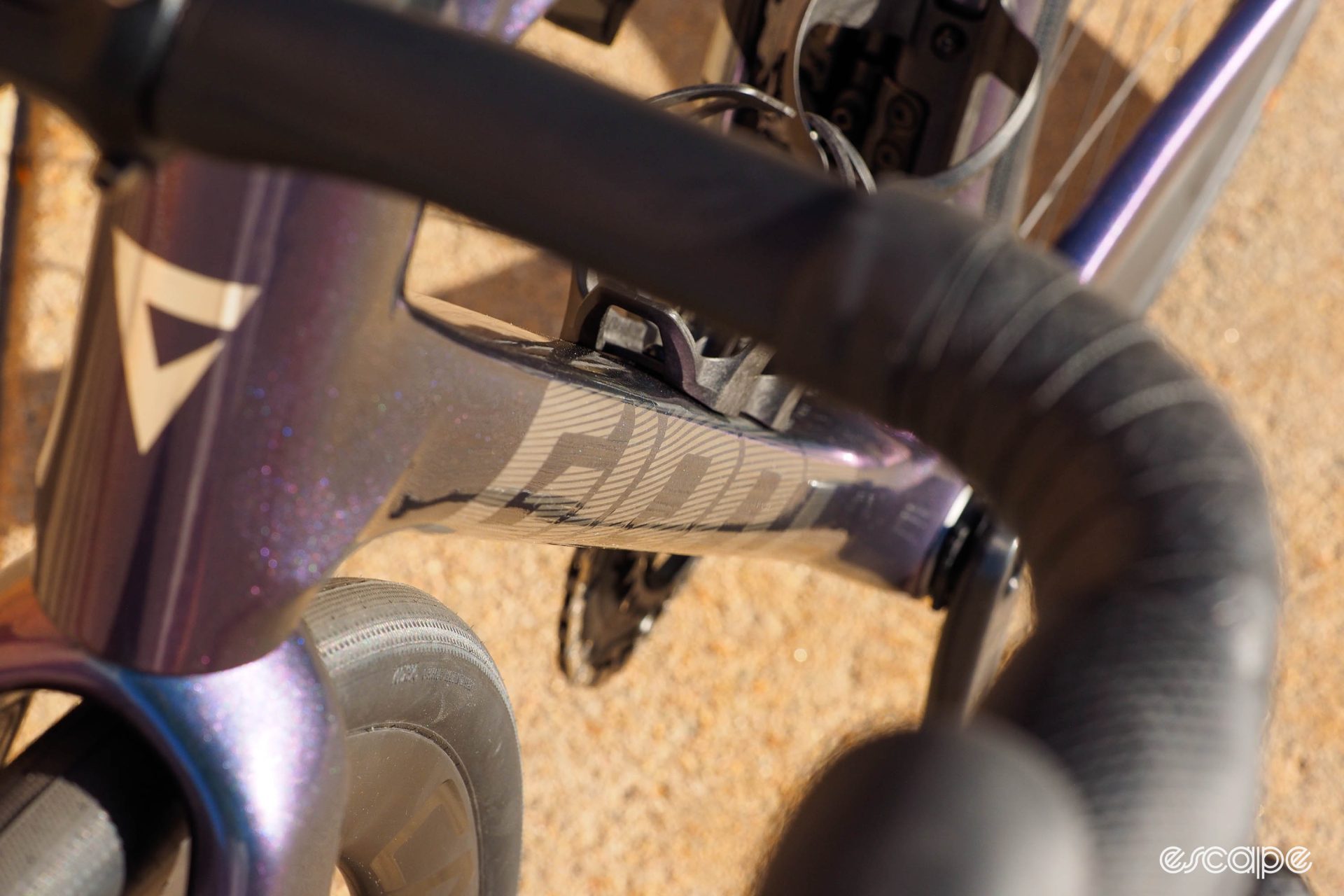
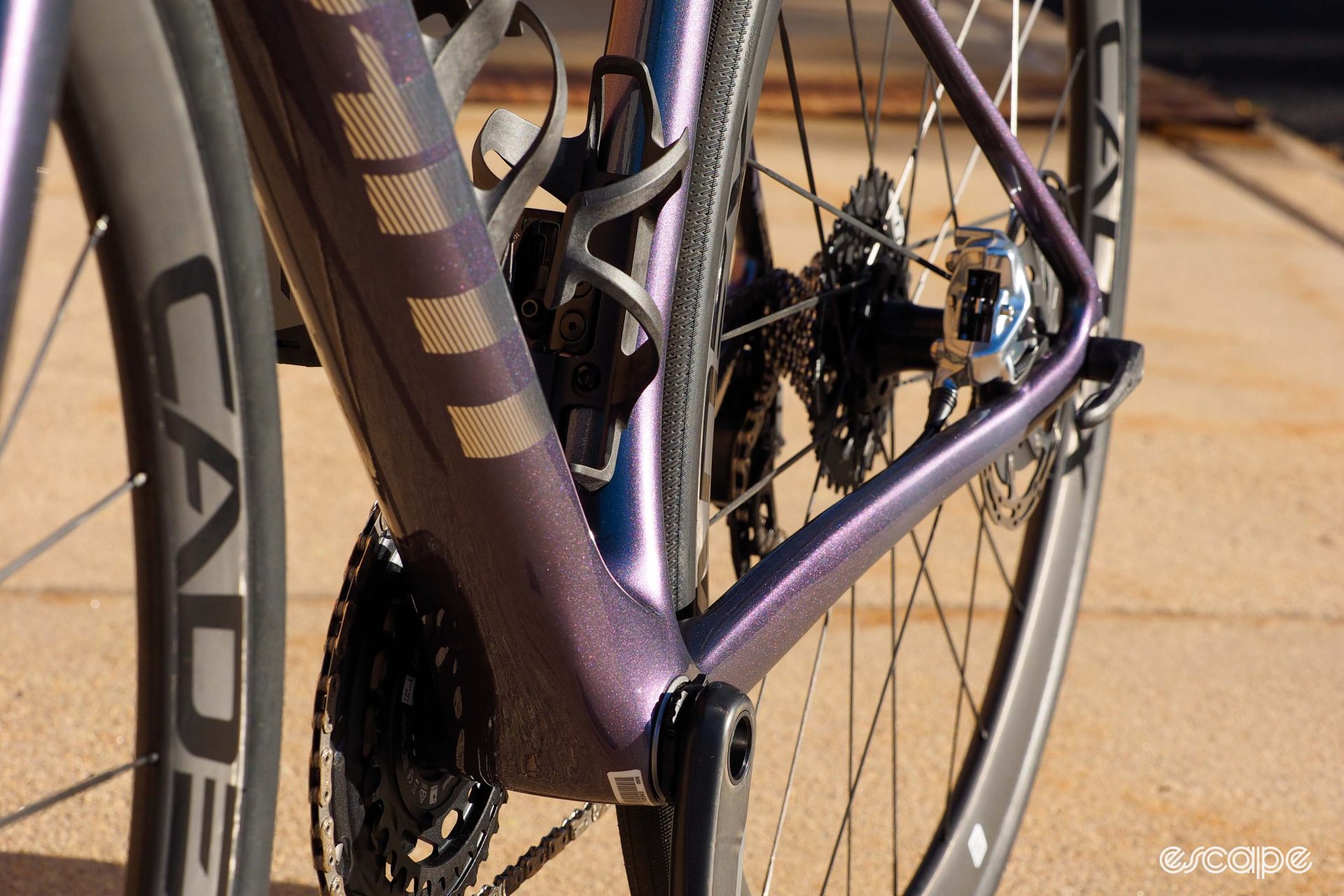

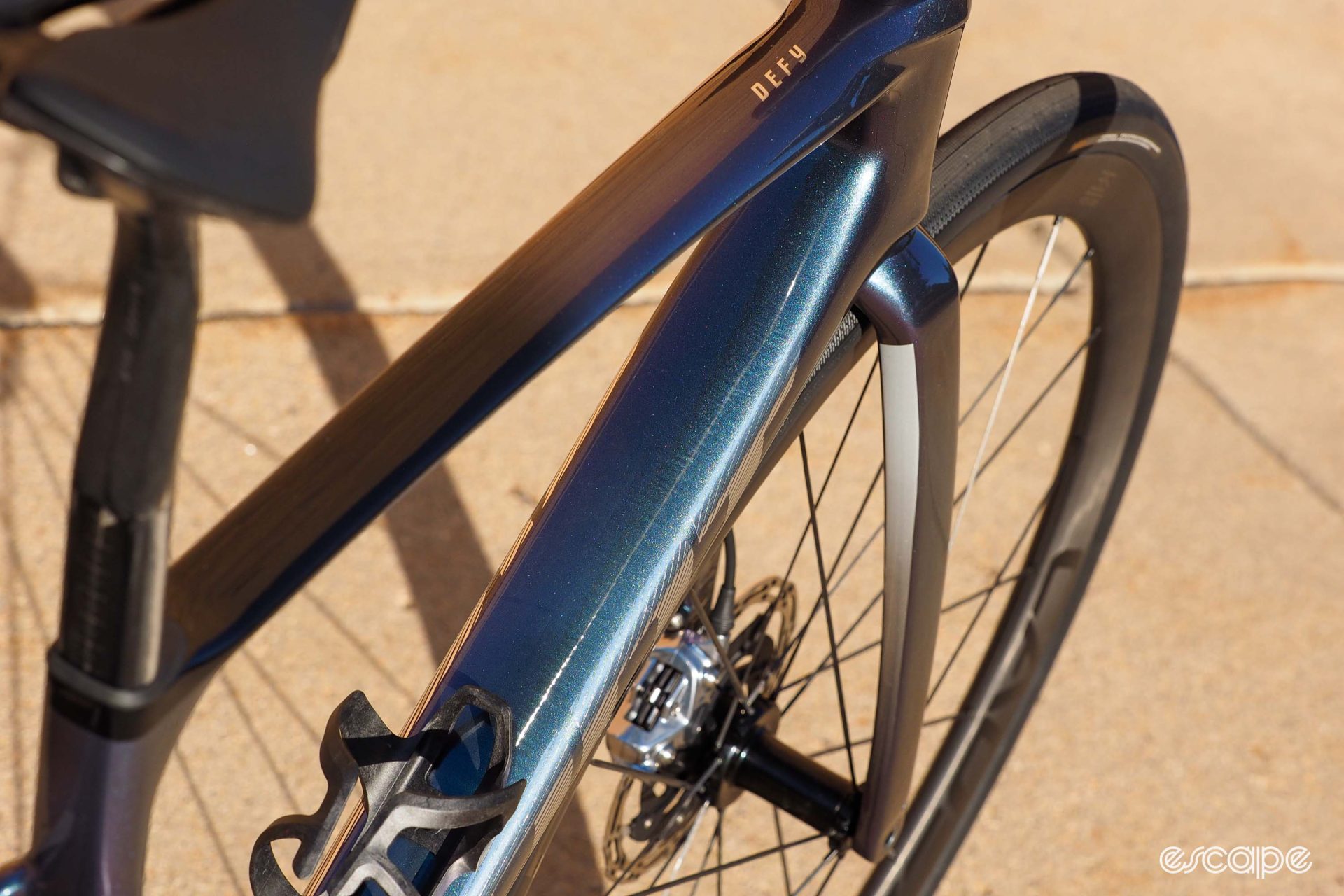
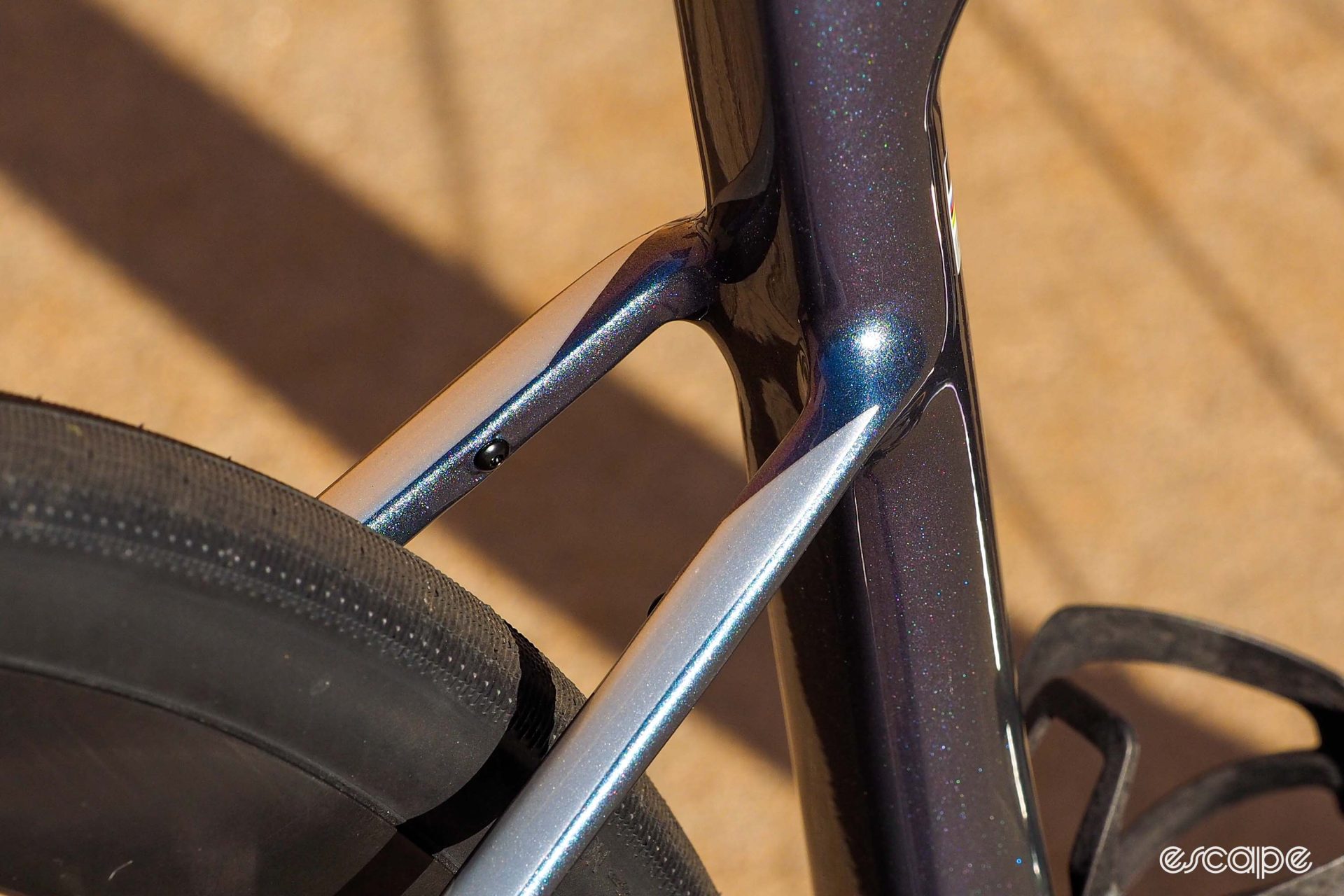
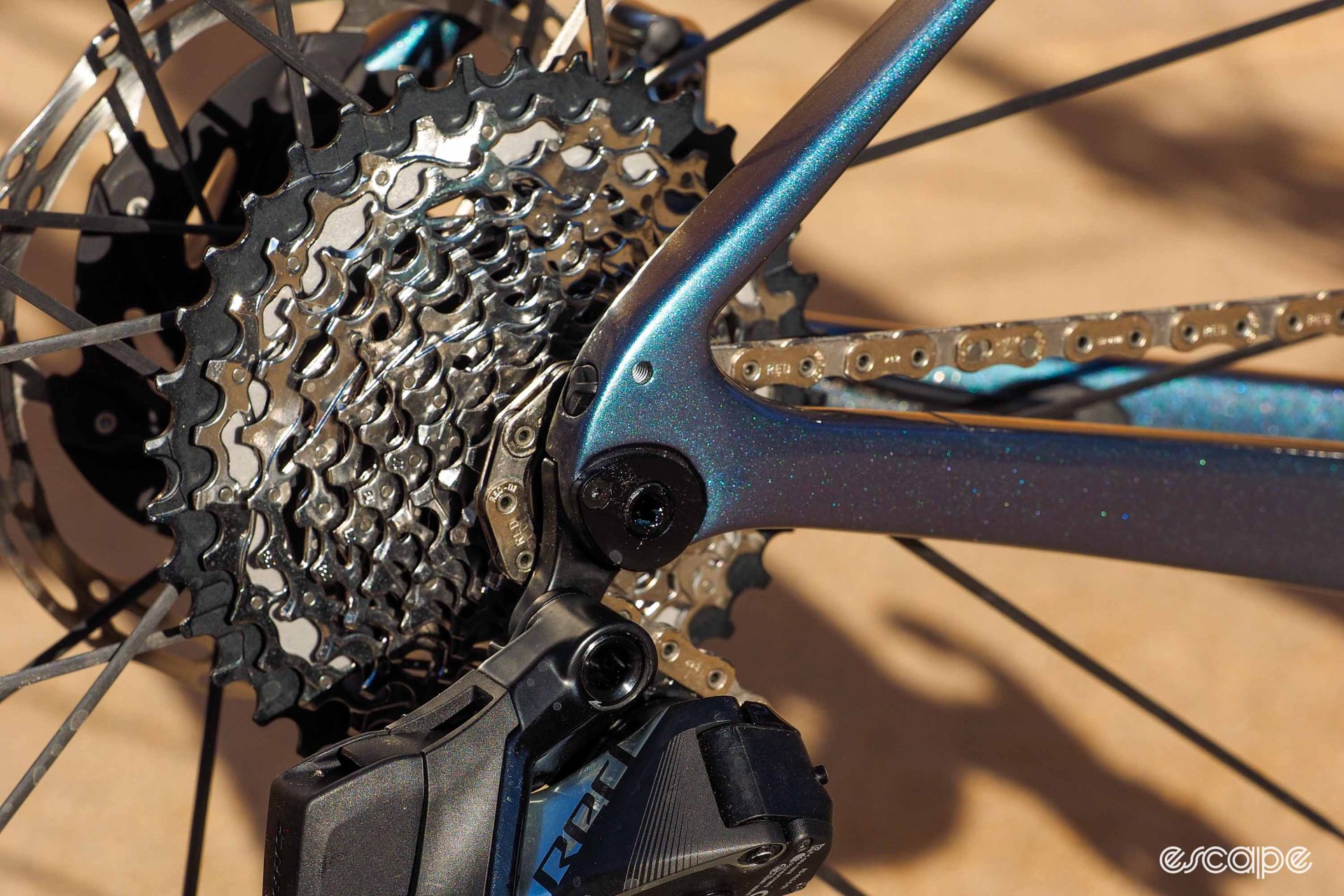
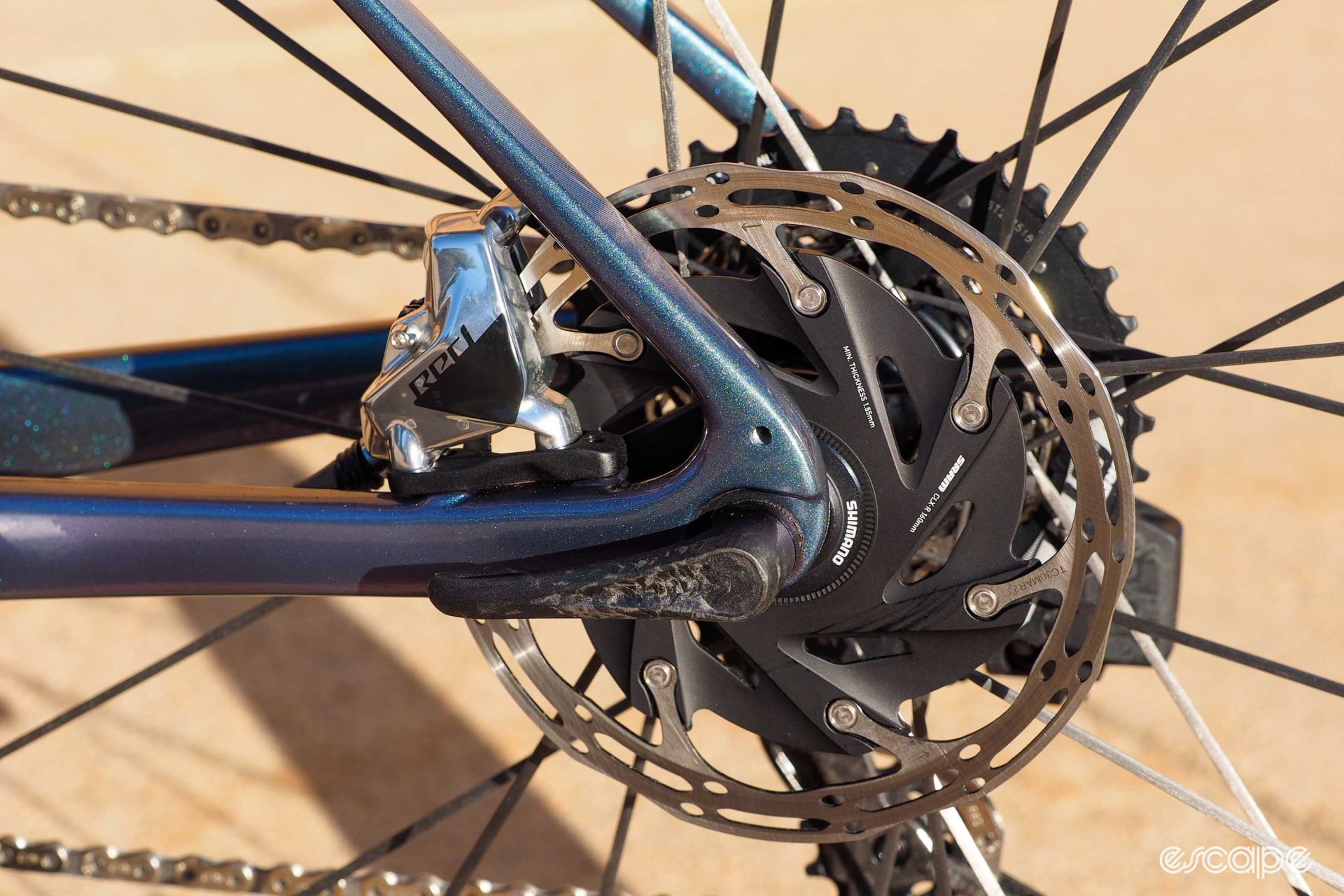
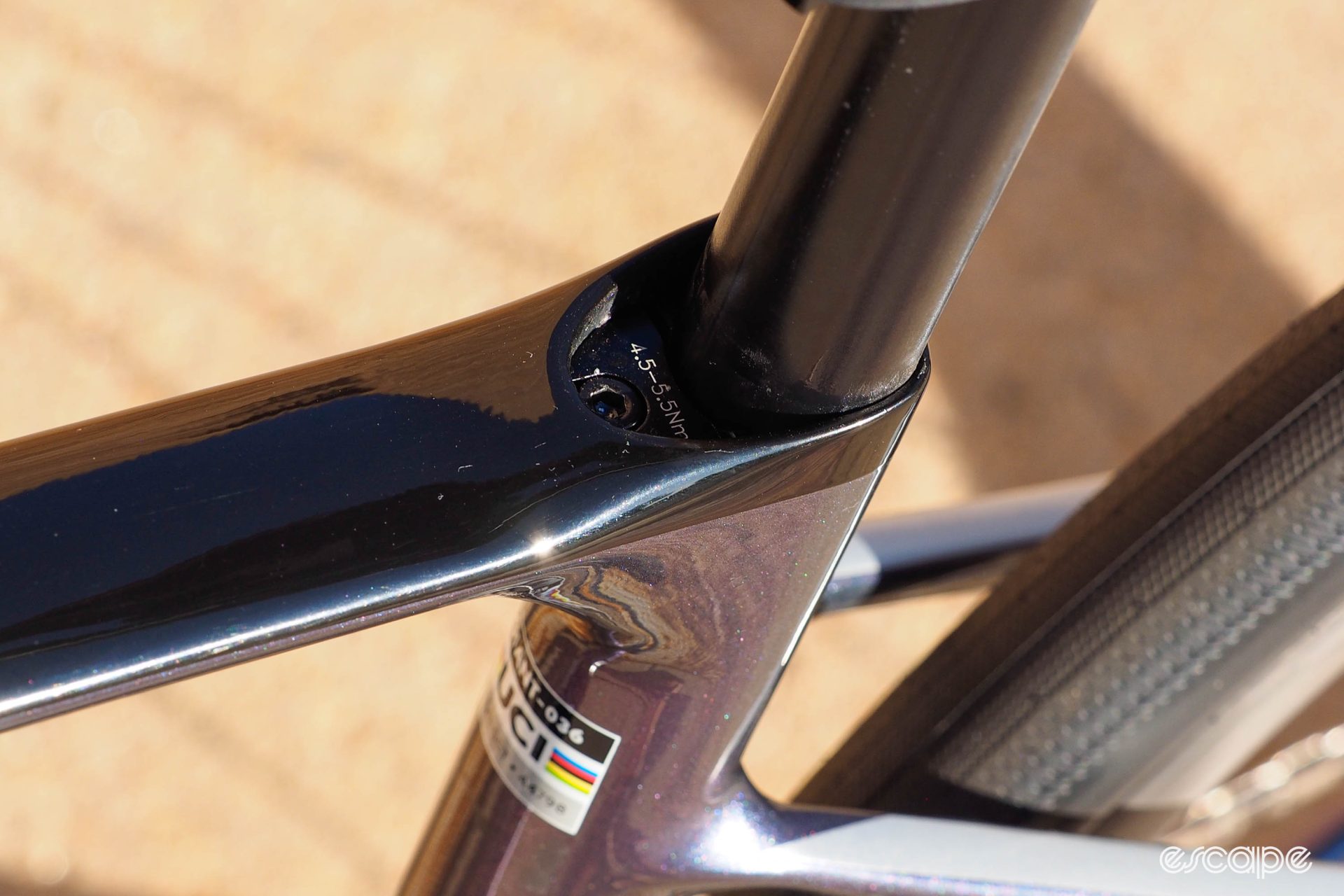

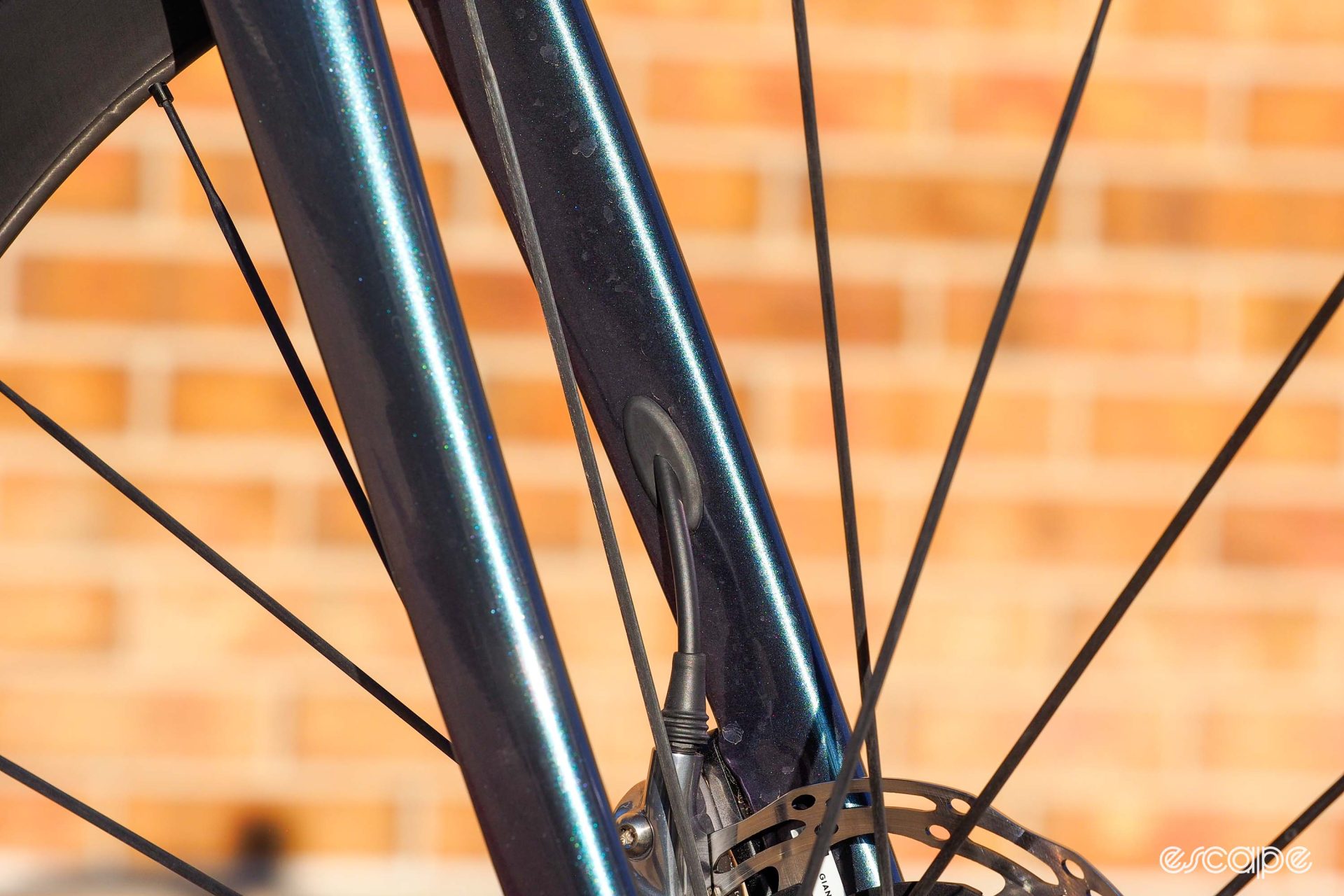

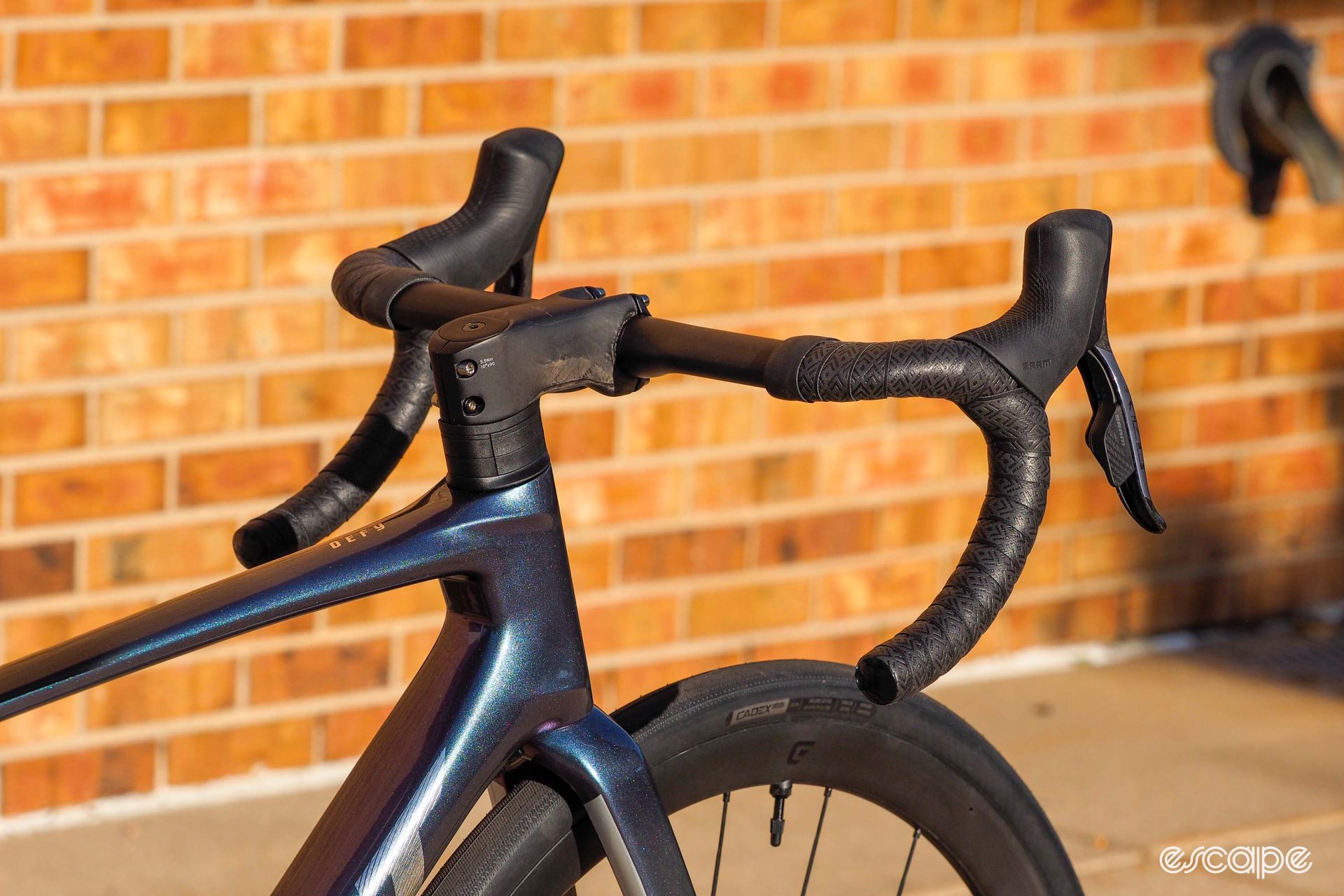
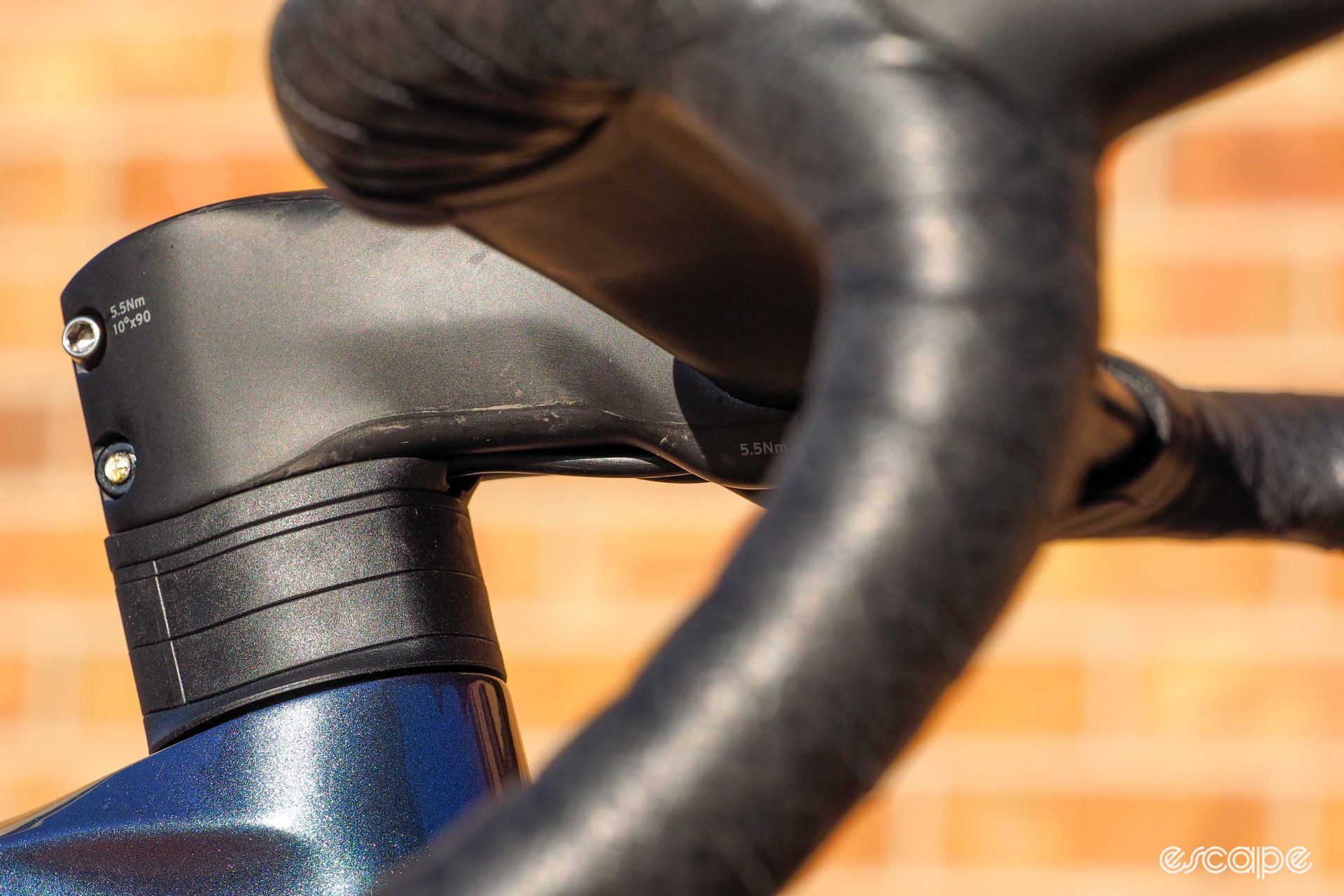

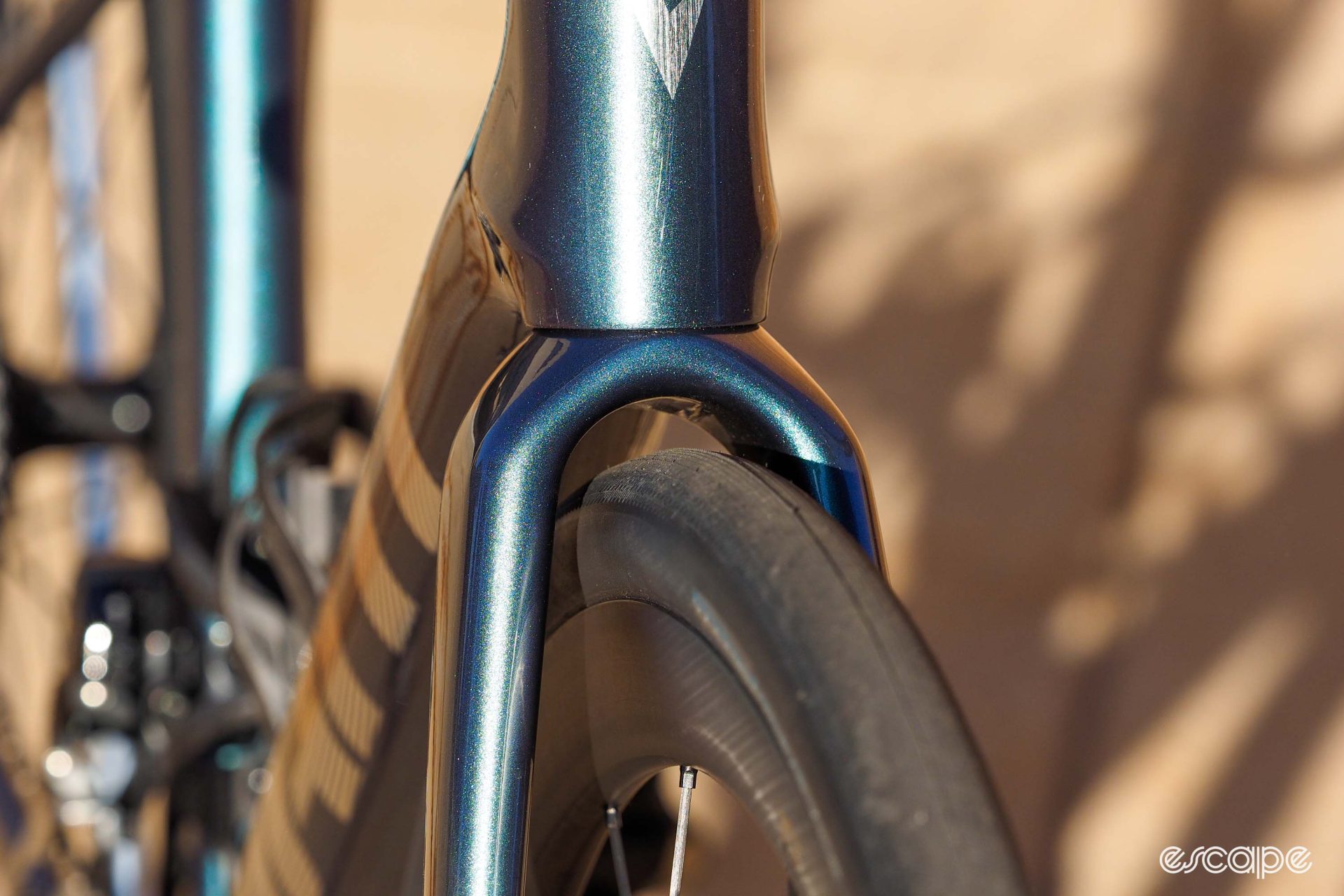
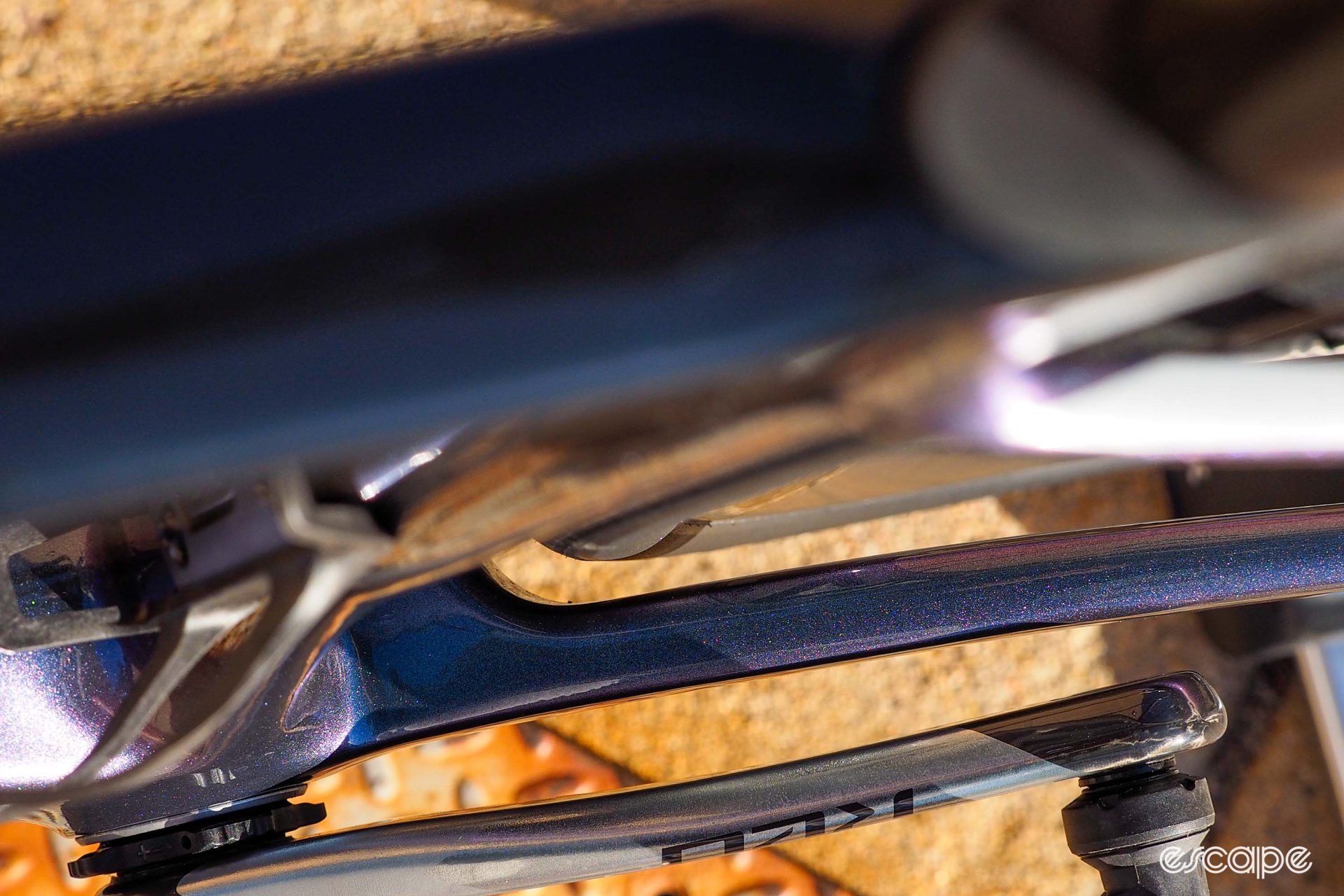
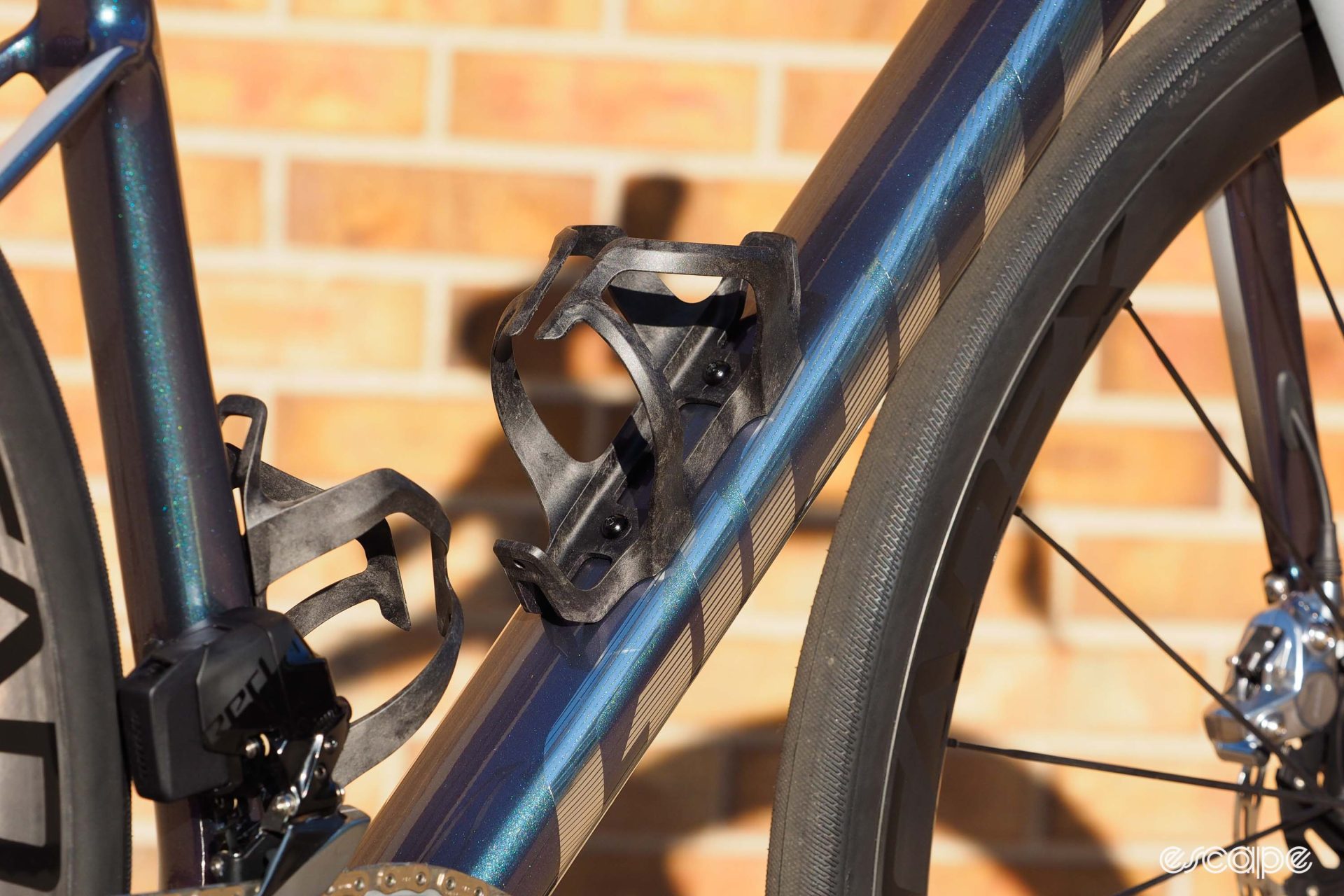
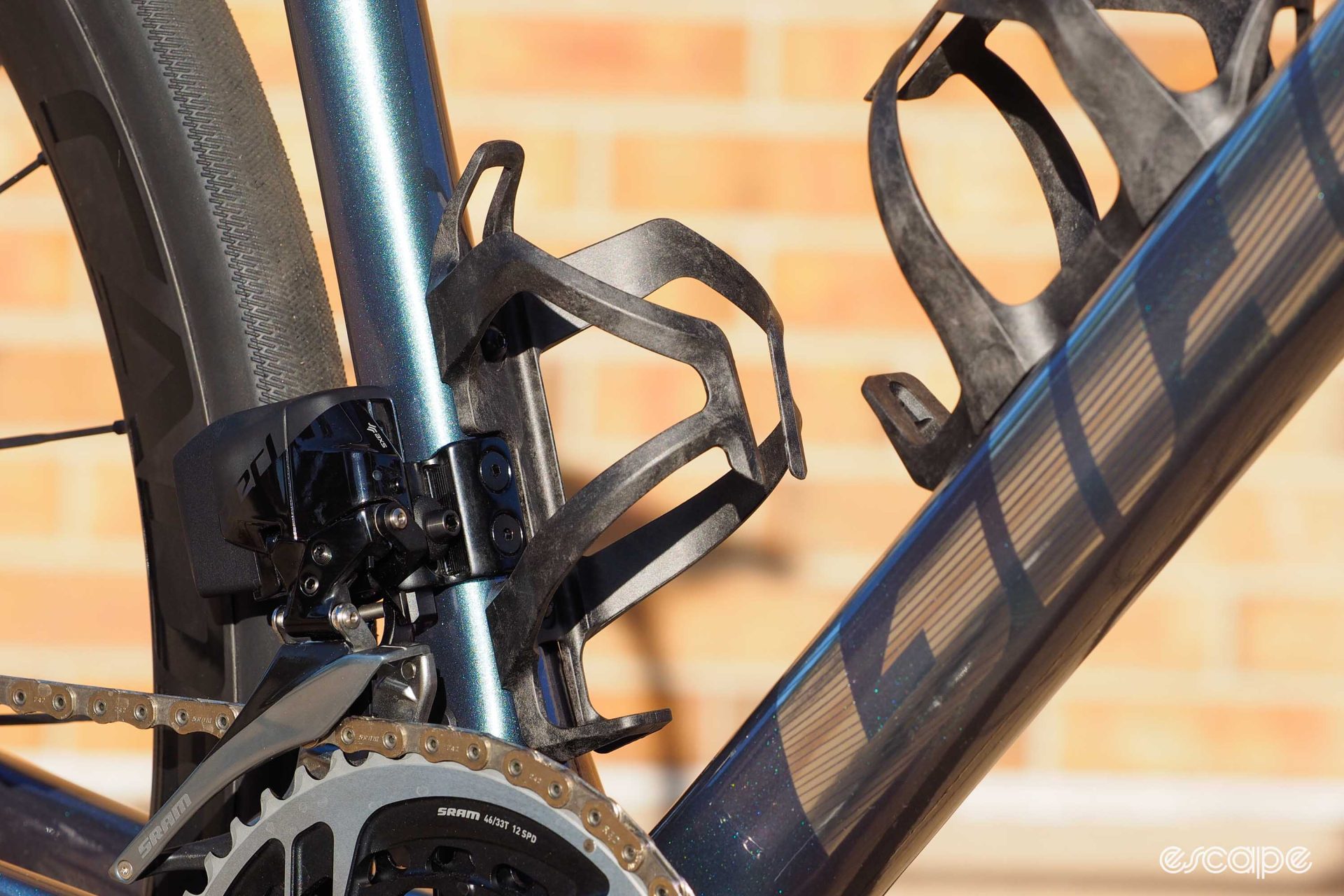
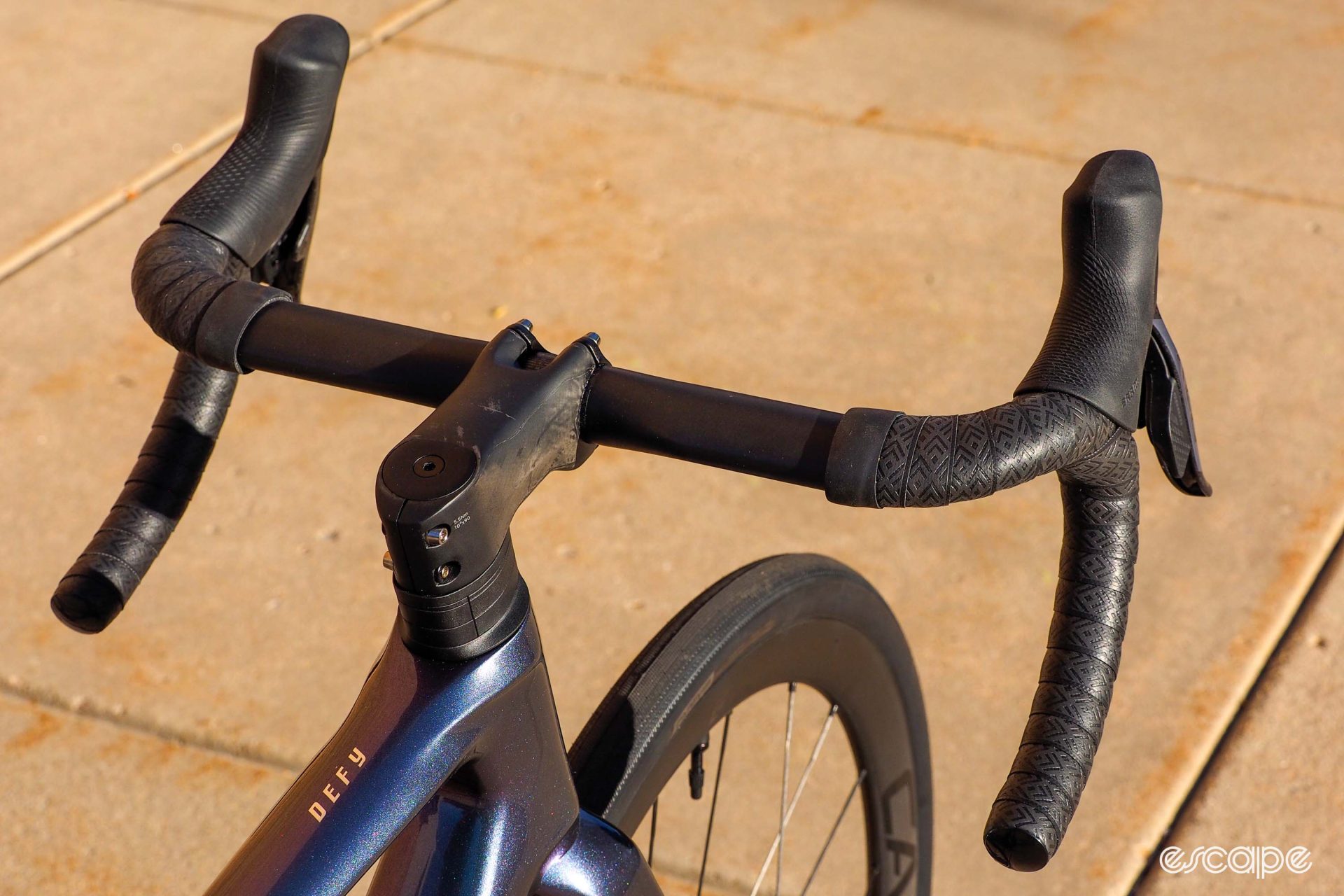
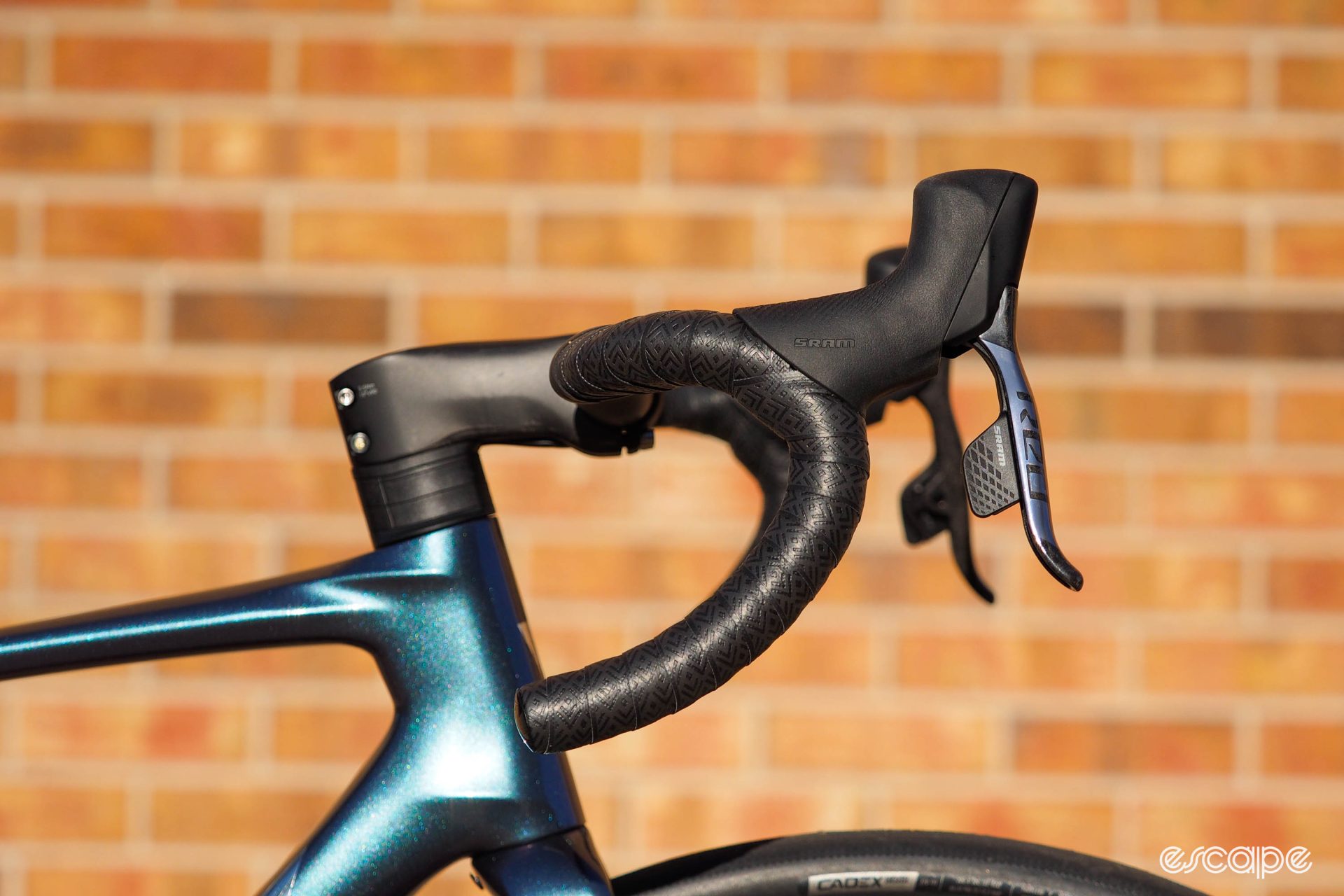
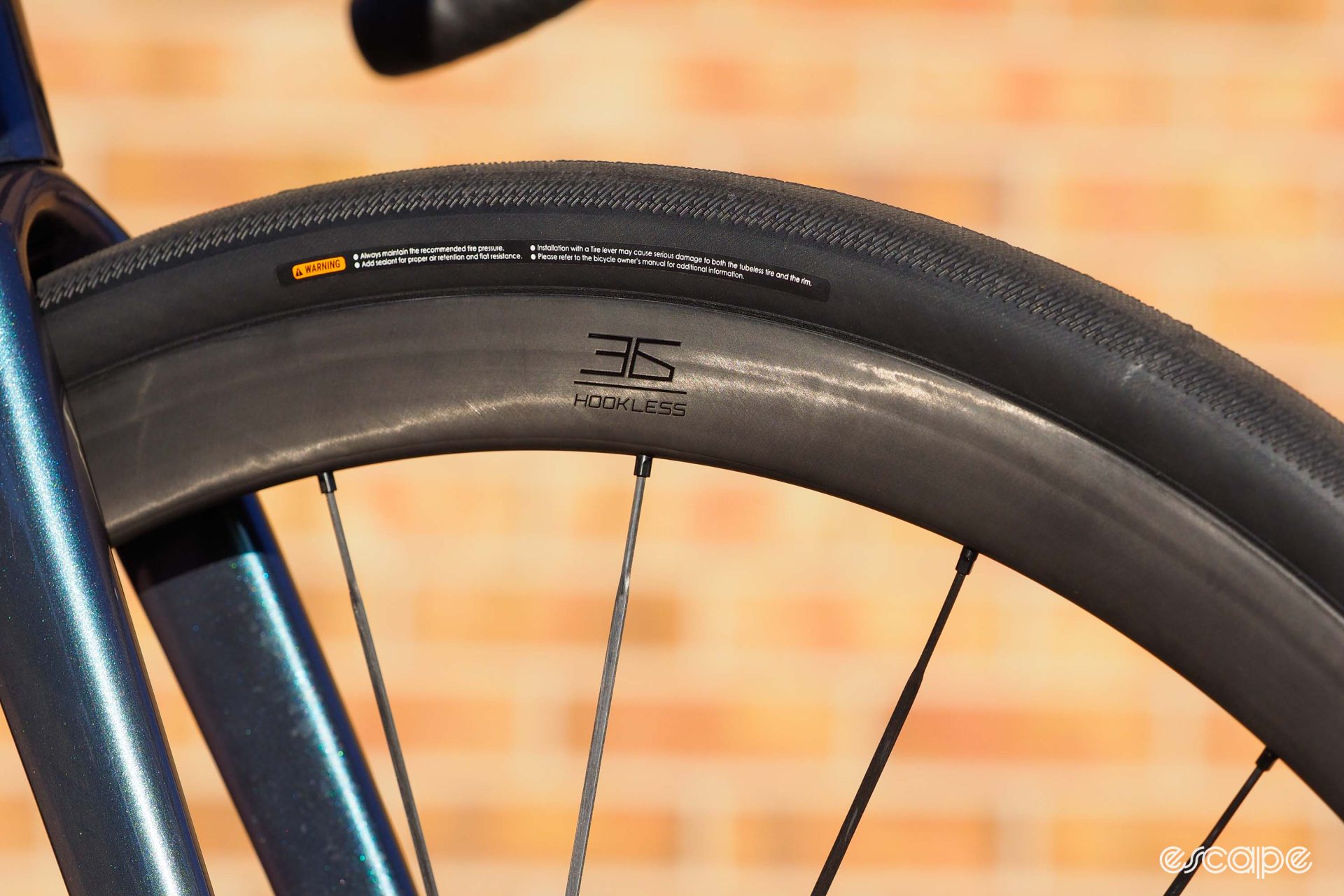
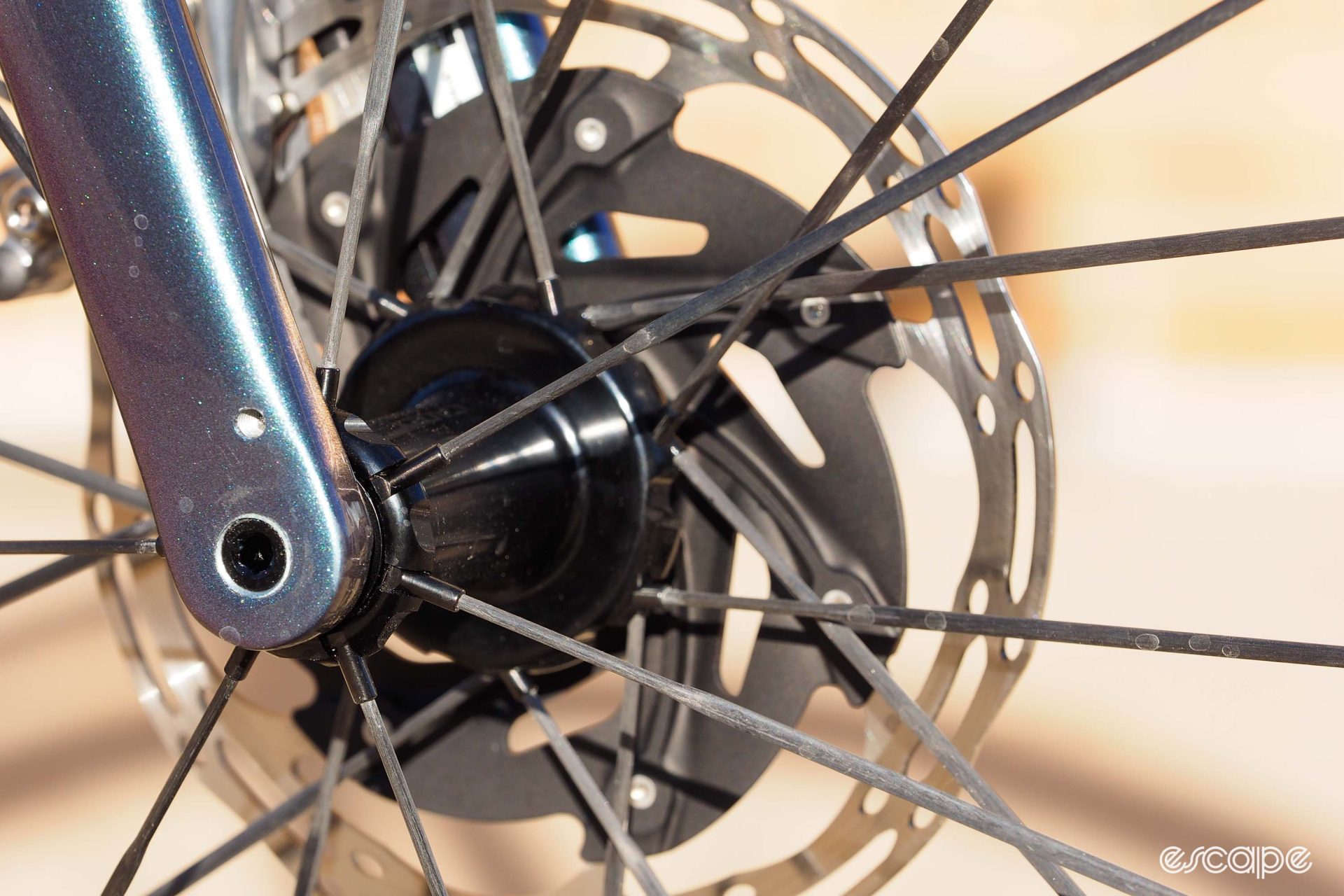
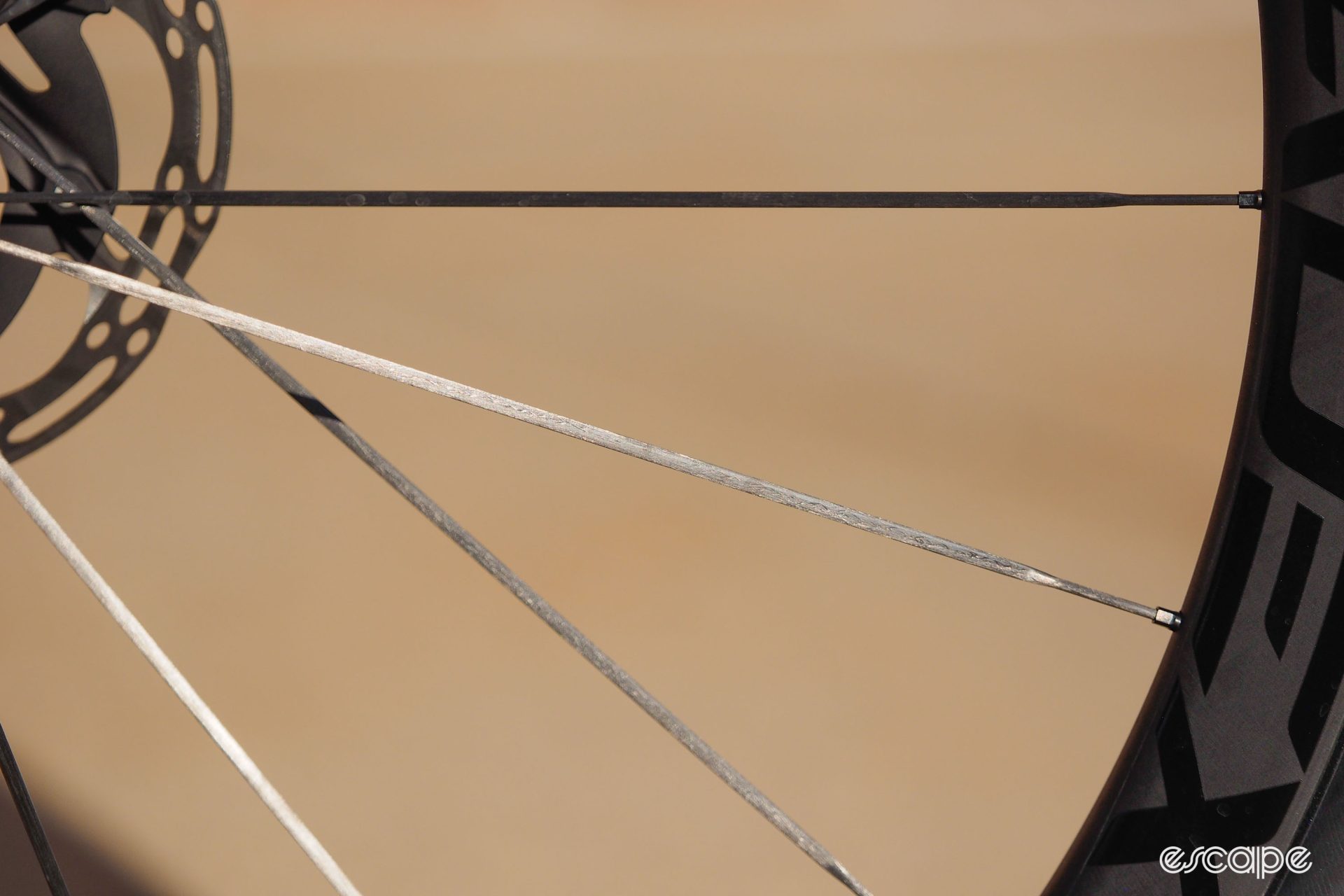
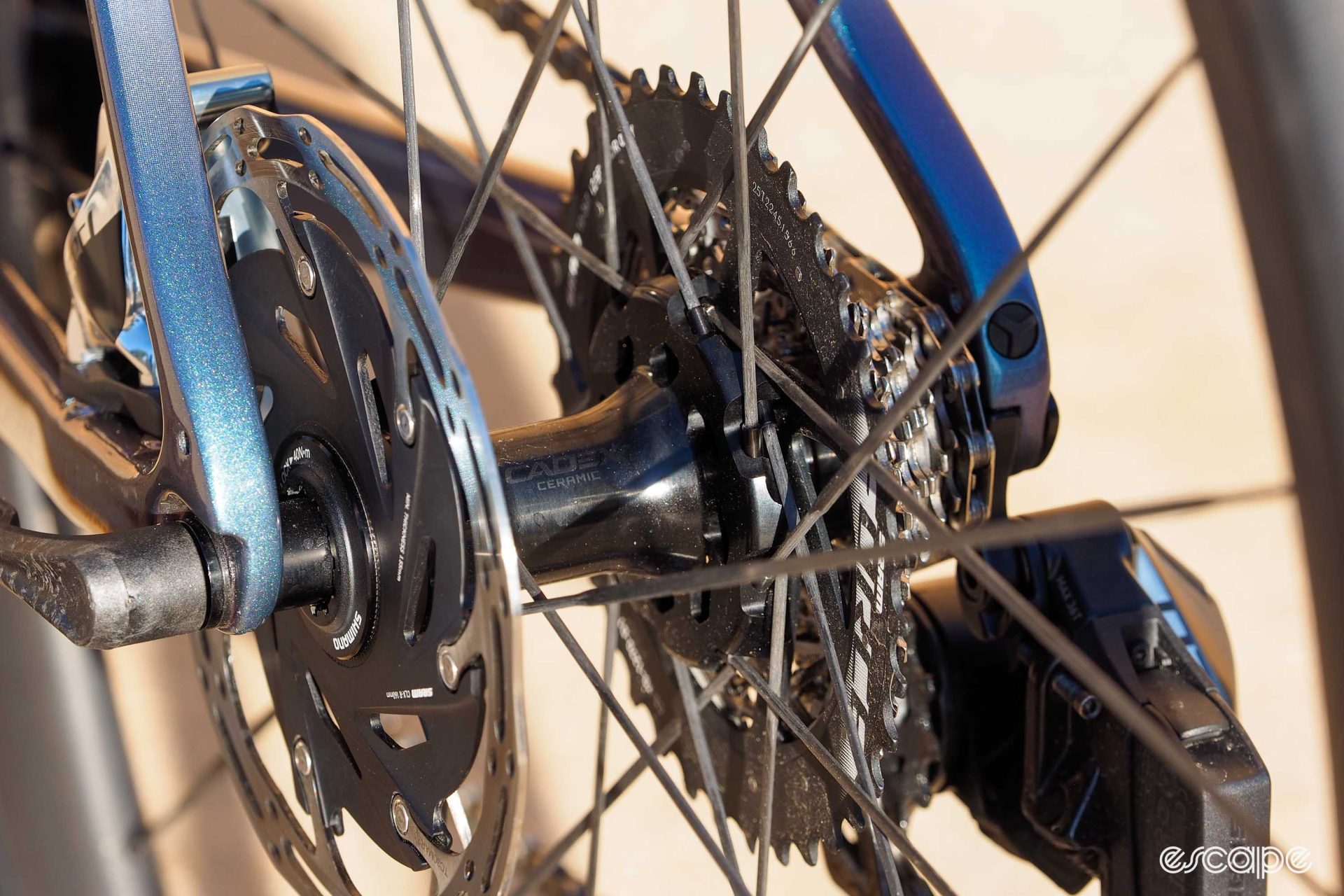
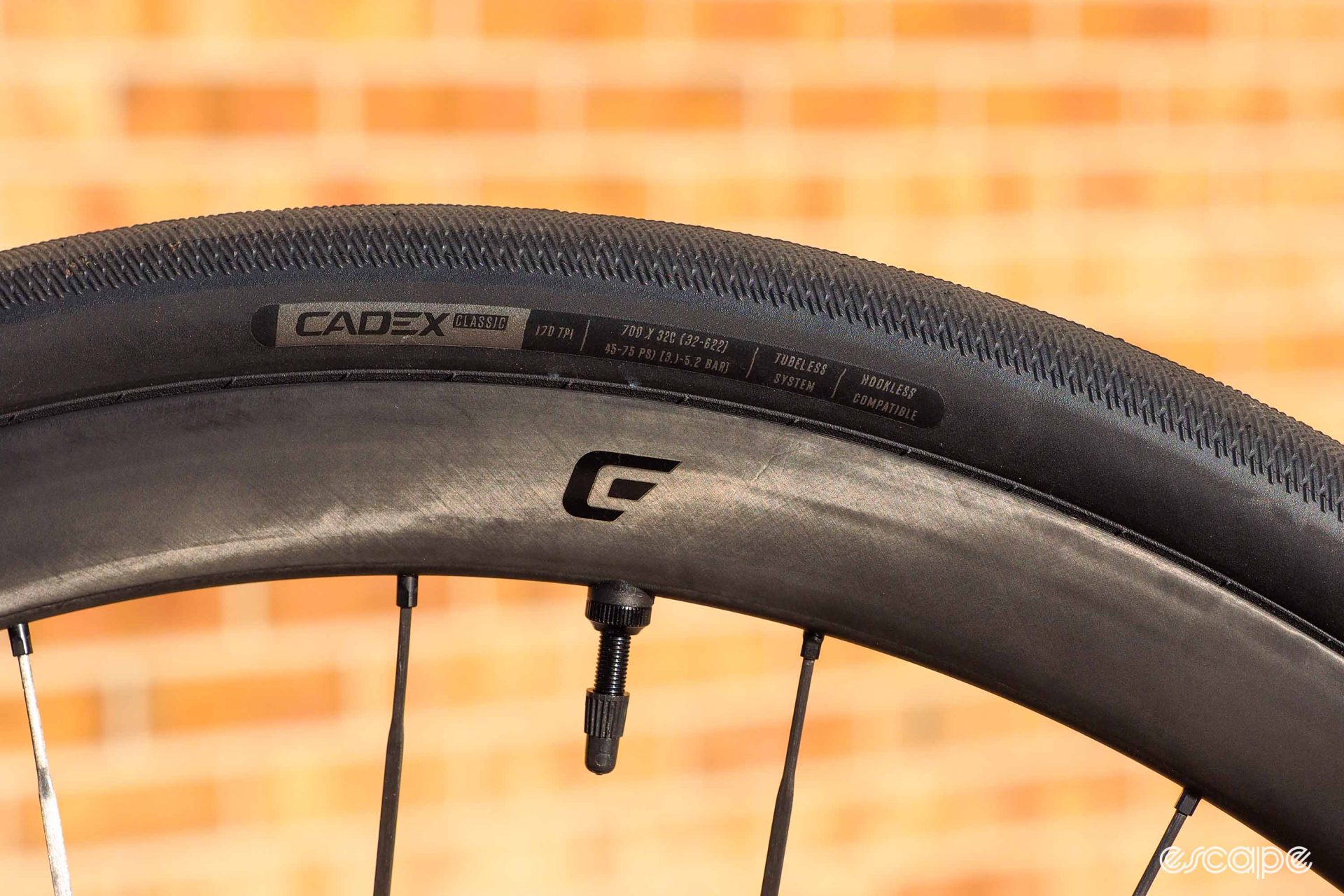
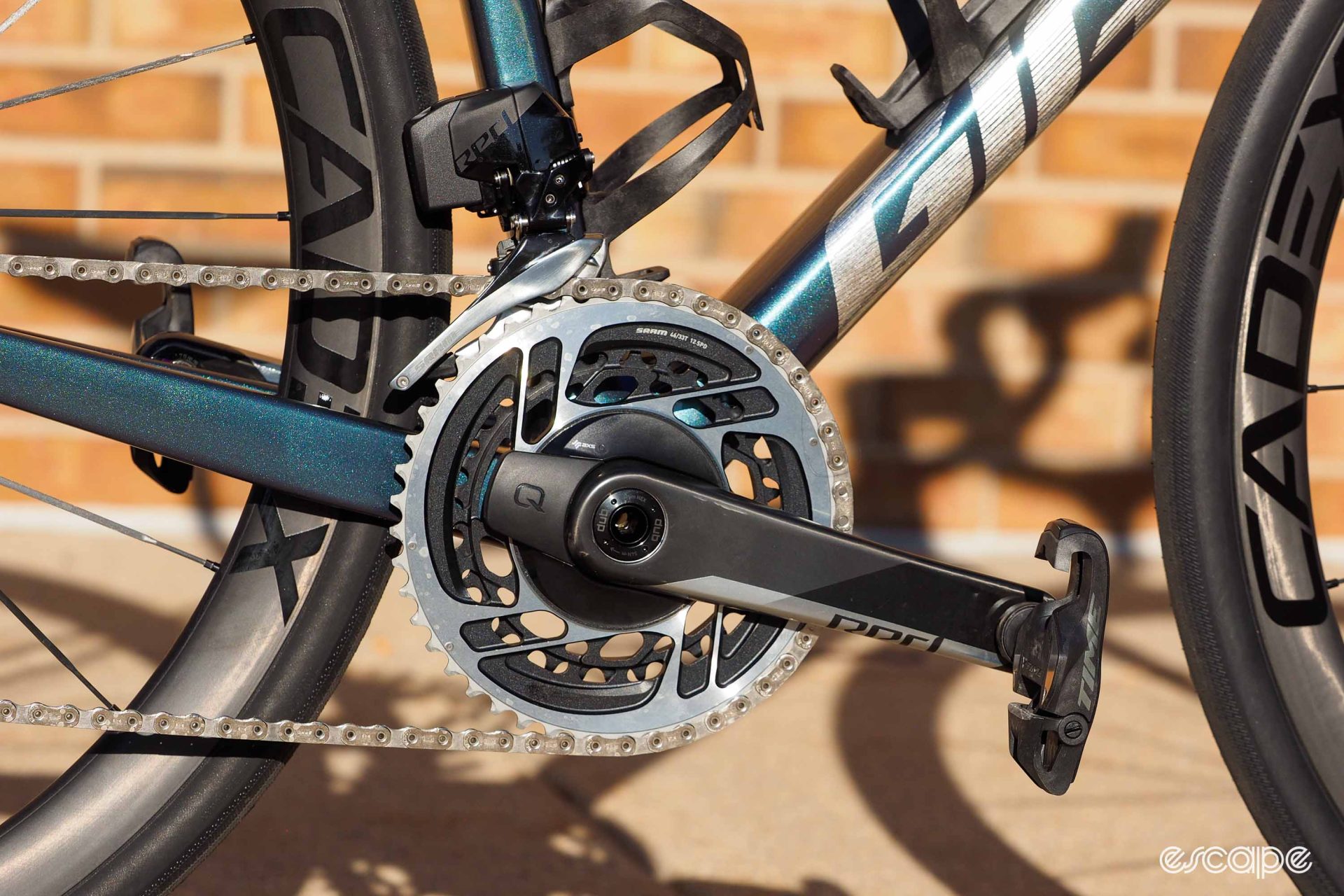
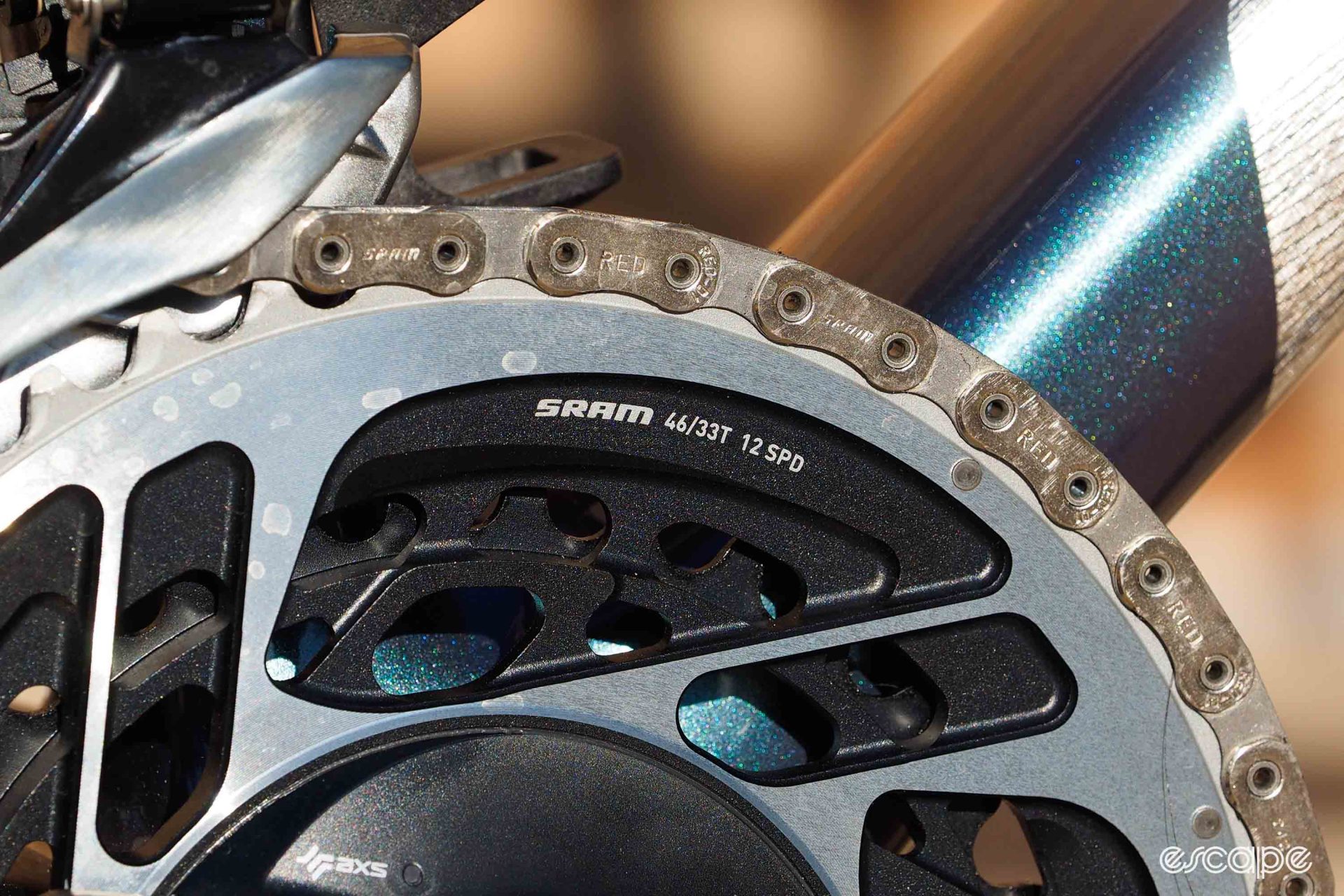
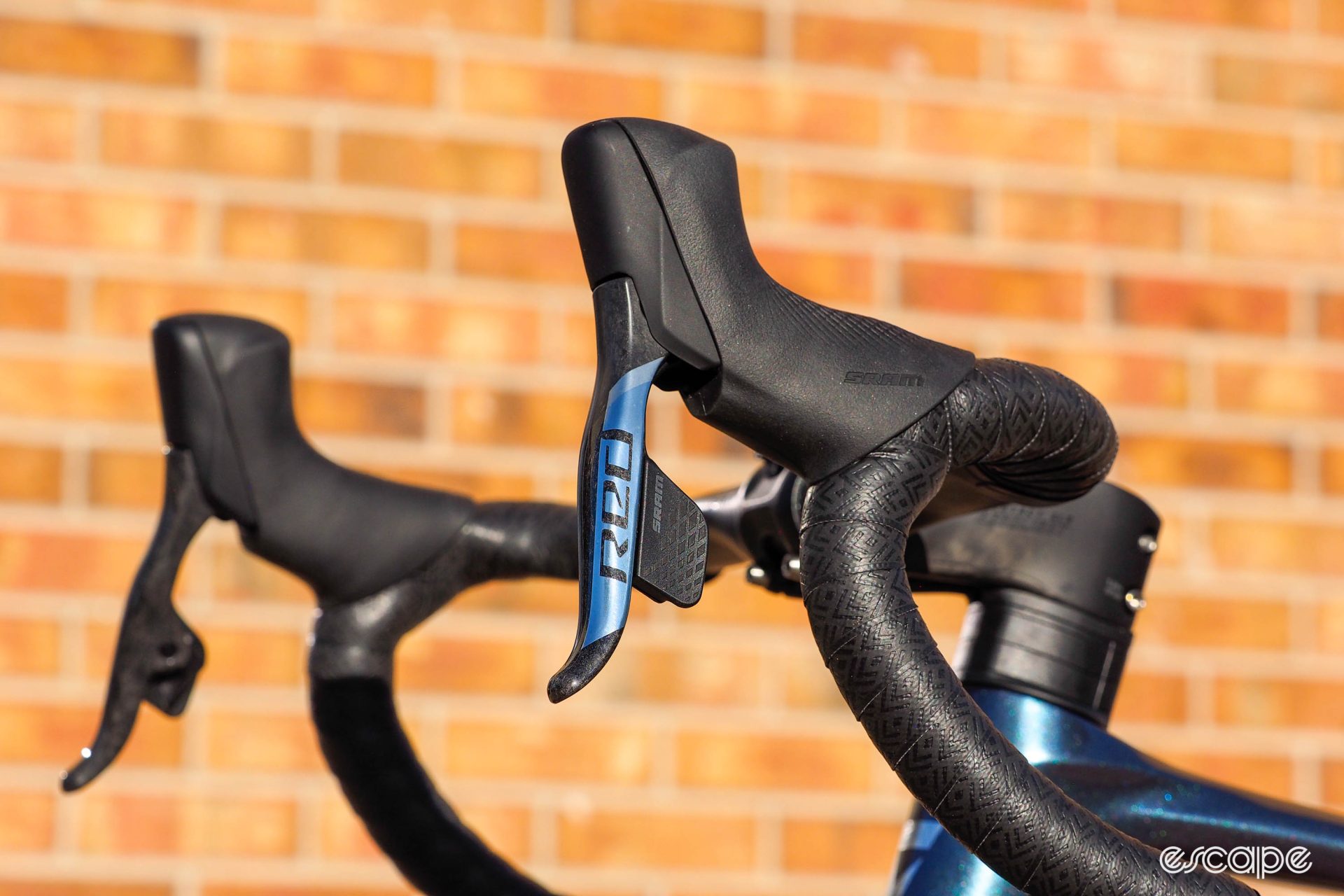
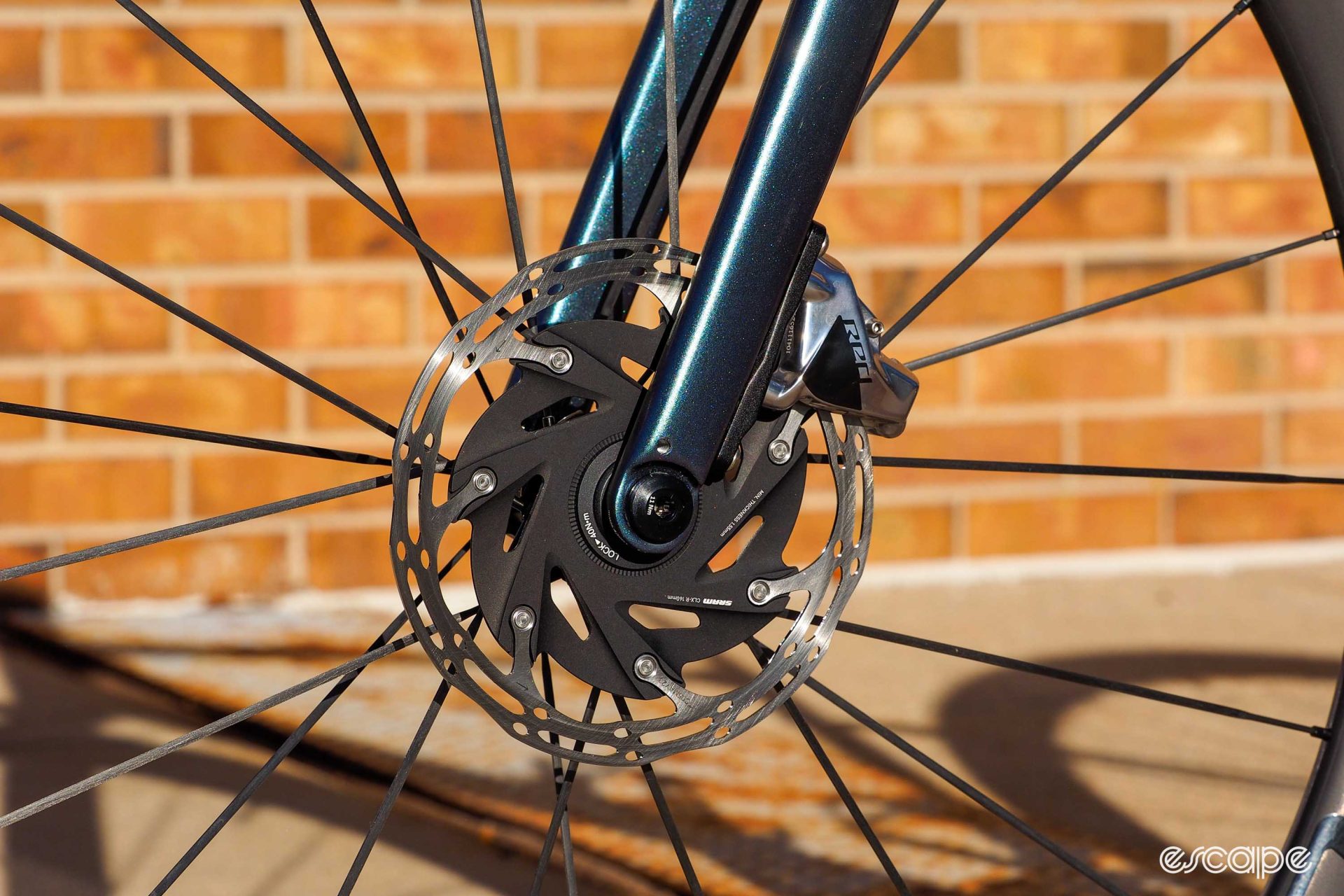
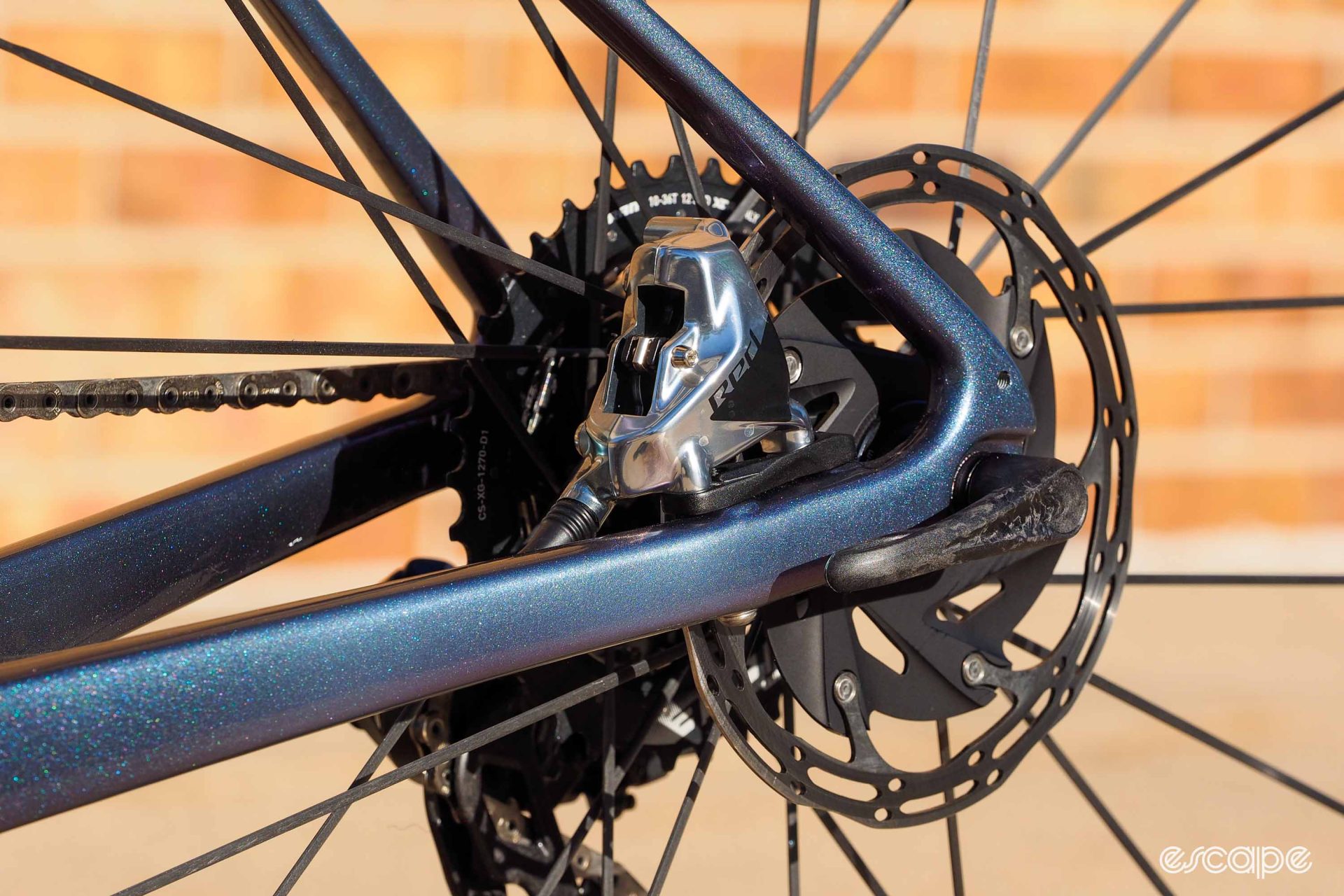

What did you think of this story?
